helicopter parent
description: parent who pays extremely close attention to a children's experiences and problems
65 results

Rethinking Narcissism: The Bad---And Surprising Good---About Feeling Special
by
Dr. Craig Malkin
Published 6 Jul 2015
Researchers who’ve studied tiger parenting, which is thankfully rare, find most youngsters reared in this atmosphere are unhappy, anxious, depressed, socially inept, and ironically, underachievers. At the warmer end of authoritarianism there’s “helicopter parenting,” a term that’s used liberally—and for the most part incorrectly. Some people think that helicopter parenting is defined by extreme involvement in their kids’ lives—for example, having daily contact with college-age children, helping them pick their course majors or develop term paper topics—all of which, according to research, might be associated with a host of benefits, including happiness and better grades. Psychologists, however, define helicopter parenting more precisely, reserving the term for a pattern of excessive control and interference.
…
Psychologists, however, define helicopter parenting more precisely, reserving the term for a pattern of excessive control and interference. College students who have been reared this way agree with statements like “My mother monitors my exercise schedule” and “If I’m having an issue with my roommate, my mother would try to intervene.” Helicopter parents aren’t frigid but their constant interference makes them seem coldly indifferent to their child’s feelings. The results are much the same as with tiger parenting: children who are miserable, anxious, and depressed. Luckily, this form of authoritarian parenting is rare, too. Growing up in an authoritarian household is a bit like living in a police state; children are constantly shaped and controlled, forced to submit to the will of the all-seeing, unquestioned parental authority.
…
Family Process, 2013, vol. 52(2), pp. 193–206. Ornaghi, V., J. Brockmeier, and I. Grazzani. Enhancing social cognition by training children in emotion understanding: a primary school study. Journal of Experimental Child Psychology, 2014, vol. 119, pp. 26–39. Padilla-Walker, L. M., and L. J. Nelson. Black Hawk down? Establishing helicopter parenting as a distinct construct from other forms of parental control during emerging adulthood. Journal of Adolescence, 2012, vol. 35(5), pp. 1177–90. Phelan, T. 1-2-3 Magic: Effective discipline for children 2–12. ParentMagic, Inc., 2010. Ryder, J. A. College Student Volunteerism: A quantitative analysis of psychological benefits gained through time spent in service to others.
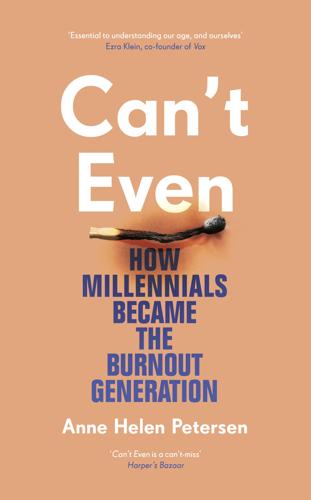
Can't Even: How Millennials Became the Burnout Generation
by
Anne Helen Petersen
Published 14 Jan 2021
“I could hop on a horse bareback whenever I wanted,” she said, “and swing on ropes into the hay piles and go look for crawfish under the bridge and build our fake town out in the woods.” But most of the millennials I talked to who had such freedoms were either older or grew up in rural areas where crime was not a concern. As the ideals of concerted cultivation continued to spread, they consolidated into behaviors we now think of as “helicopter parenting,” which could also just be described as more parenting, and particularly more time spent with children, especially during the afterschool and weekend times when those children were previously on their own. In “The Overprotected Kid,” published in the Atlantic in 2014, Hanna Rosin’s husband realizes that their own daughter, then ten, had probably experienced no more than ten minutes of unsupervised time in her entire life.1 Rosin traces the shift toward increased supervision—and the concurrent attempt to eliminate risk in children’s play—back to two major events in the late ’70s.
…
The anxiety over “stranger danger” was, in many ways, a displacement of other anxieties about the shifting understanding of family, of the increase in working mothers, of a weakening of community and the cohesion that accompanied it. There was so much that seemed out of a parents’ control, but where and how a child played, whether or not they were supervised at all times—that could be closely monitored. As millennials hit high school and college over the course of the 2000s, this type of helicopter parenting became widespread—readily identifiable and derided. But back in 1996, the sociologist Sharon Hays had described the phenomenon in her book The Cultural Contradictions of Motherhood. “In sum,” she wrote, “the methods of appropriate child rearing are construed as child-centered, expert-guided, emotionally absorbing, labor-intensive, and financially expensive.”2 The crucial word here is construed—just because middle-class parents decided that a certain style of parenting is superior doesn’t mean it empirically is.
…
She started going to therapy after an anxiety attack landed her in the ER, but finds it difficult to heed her therapist’s suggestion that she shouldn’t feel guilty about taking a day to do whatever she wants—even if that is a day of Netflix bingeing, or a day of rest—because she doesn’t really know what she might want to do if it’s not work. For some millennials, helicopter parenting wasn’t an over-reaction to class anxiety. It was the appropriate, measured reaction to real, not perceived, threat—and systemic racism. Rhiann, who spent her early childhood in Gary, Indiana, recalls a childhood of locks and forbidden areas. There were iron bars on her windows, and her backyard was enclosed with cinderblocks.
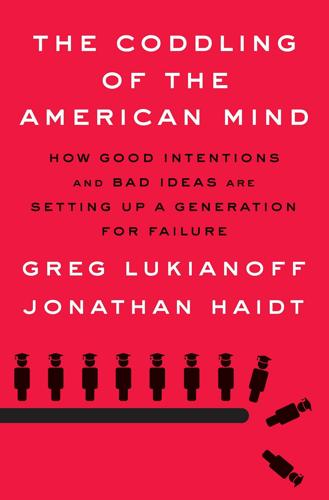
The Coddling of the American Mind: How Good Intentions and Bad Ideas Are Setting Up a Generation for Failure
by
Greg Lukianoff
and
Jonathan Haidt
Published 14 Jun 2018
Some of these events qualify as hate crimes and are targeted especially at Jews and people of color. We discuss that thread in this chapter. Rising rates of teen depression and anxiety affect both boys and girls but have hit young women particularly hard (as you’ll see in chapter 7). The rise in overprotective or “helicopter” parenting and the decline of free play (chapters 8 and 9) have negatively affected kids from wealthier families (mostly white and Asian)1 more than kids from working class or poor families. The increase in the number of campus administrators, along with the scope of their duties, may be having an effect at all schools (chapter 10), but new ideas and stronger passions about social justice may matter most on campuses where students are more engaged politically (chapter 11).
…
Members of iGen wait longer to do these things— and then do less of them—than did members of previous generations. Instead of engaging in these activities (which usually involve interacting with other people face-to-face), teens today are spending much more time alone, interacting with screens.8 Of special importance, the combination of helicopter parenting, fears for children’s safety, and the allure of screens means that members of iGen spend much less time than previous generations did going out with friends while unsupervised by an adult. The bottom line is that when members of iGen arrived on campus, beginning in the fall of 2013, they had accumulated less unsupervised time and fewer offline life experiences than had any previous generation.
…
Safetyism takes children who are antifragile by nature and turns them into young adults who are more fragile and and anxious, and therefore more receptive to the Untruth of Fragility: What doesn’t kill you makes you weaker. Pressured Into Overprotection When parents get together and talk about parenting, it is common to hear condemnations of helicopter parenting. Many parents want to do less hovering and give their kids more freedom, but it’s not so easy; there are pressures from other parents, from schools, and even from laws that push parents to be more protective than they would like to be. Skenazy says that societal pressures often prompt parents to engage in “worst-first thinking.”32 Unless parents prepare for the worst possible outcomes, they are looked down on by other parents and by teachers for being bad parents (or even “America’s Worst Mom”).

The End of the Suburbs: Where the American Dream Is Moving
by
Leigh Gallagher
Published 26 Jun 2013
These factors might also help explain the lack of stigma associated with moving back home for this group: the Pew Research Center found that 80 percent of those twenty-five- to thirty-four-year-olds who have moved back in with their parents are just fine with the arrangement—something that would have been unthinkable a generation ago. Another oft-cited factor for the millennials’ failure to launch is that so many in this group were raised by “helicopter parents,” so named for their tendency to hover over their kids at all times. Helicopter parents don’t want to see their children suffer the harsh realities of the real world, the thinking goes, and their children, having been raised to believe their parents will always be there to solve their problems, are reluctant to separate. Nadira Hira, author and Gen Y expert, sees it a little differently: “We’ve always been close to our parents because they’ve always been so invested in us,” she says, adding that technology has only made it easier and more acceptable for millennials to consult with their parents on just about everything.
…
See also Oil prices energy-efficient cars, 105, 108 and suburban excess, 21–22 England, suburban development in, 28 England, Don, Jr., 183 Environment destruction and suburban development, 47–48, 68 farmland, developments built on, 38, 68, 182 pollution and automobiles, 46, 99, 108 Euclid, Ohio, 40 Euclidean zoning, 41 Extell Development Company, 151 Families. See also Adolescents; Aging population; Children children in suburbs, decline of, 145–47 demographic factors. See Population elders in suburbs, 143–45, 147–150 empty nesters, 172 in “first ring” suburbs, 202–3 free time, in walkable communities, 133, 170–71 helicopter parents, 153–54 multigenerational, 152–55 suburban move-up buyers, 7, 189–190 young, preference for cities, 111–12, 151–52, 169–172, 204–5 Family size decrease in, 5, 19, 144–47 millennials-parents living together, 152–55 multigenerational homes, 156–57 Fannie Mae/Freddie Mac, 187 Farmland buying back by farmers, 106, 182–84 developments built on, 38, 68, 182 Federal-Aid Highway Act (1956), 38, 62 Federal government, and suburban development, 35, 42–43, 61–63, 65–67, 192 Federal Housing Administration (FHA), 35, 40, 42, 61, 126, 206 Federal Housing Finance Agency, 187 “First ring” suburbs, 202–3 Floral Avenue, Illinois, 141–42 Florida, Richard, 92, 127, 166 “Fonzie flats,” 156 Ford, Gerald, 168 Ford, Henry, 32, 82 Foreclosures and housing bust, 73–74 new versus foreclosed home buying, 208 repossessed homes, reuse of, 186–87, 205–6 Fort Point, Boston, 168 Free time, in walkable communities, 133, 170–71 Frey, William, 150, 180 Fullerton, California, 38 Futurama, 64 Future communities.
…
See Aging population; Baby boomers; Gen Y; Millennials Gen Y, 144, 152, 153 Georgetown, Washington, DC, 40, 121, 125 Germantown, Philadelphia, 29 GI Bill (1944), 35 Gibson, Denise, 200–201 Gibson, Steve, 178 Gillen, Kevin, 15, 131 Glaeser, Edward, 75, 92, 158–59, 166, 175 Glen, The, Illinois, 128 Gore, Al, 21 Grand Central Station, 30 Granny flats, 156 Great Depression, 32, 34, 76 Great Plains, 184 Great Recession birth rate decline during, 145 home-building bust, 3–4, 182 home-related disaster, 72–75 minimalist mentality emerging from, 138–39 mortgages, cheap in, 66 suburban poor, rise of, 177–79 Greenwich Village, New York City, 29 Gruen, Victor, 48 Gwinnett County, Atlanta, 68 Hampstead, Alabama, 121 Haskell, Llewellyn, 31 Haussmann, Baron, 118 Health healthier communities, features of, 87 problems, automobile dependence, 86–89, 97, 99 walking, benefits of, 93–94 Helicopter parents, 153–54 Henshaw, Jim, 143–44 Highways, 34, 62 Hill, Graham, 139 Hipsturbias, 129–130, 202 Hira, Nadira, 153–54, 158 History of suburbia, 27–52 automobile in, 32–34, 41–42, 81–82 bedroom communities, 31 cities, decline of, 29 corporation relocations to, 44 England, 28 federal master-plan in, 35, 42–43, 61–63, 65–67, 192 housing boom (2000s), 66–72 McMansion era, 69–71 malls/big-box stores, 44–45 marketing of suburbs, 64–69 mass-produced communities, 37–38, 46, 70 post–World War II expansion, 35–38, 41, 65 racial homogeneity, 42–43 single-use zoning, effects of, 39–42, 63 socioeconomic status in, 28 sprawl/edge cities, 45–46 and transportation advances, 29–34, 62 urban migration into (1970s), 44 villages, early design, 30–32, 40–41 Hoboken, New Jersey, 193 Hollander, Justin, 185–86 Home-building decline farmland, reversion to farming, 106, 182–84 and Great Depression, 34–35 and Great Recession, 3–4, 72–73 zombie subdivisions, 182 Home-building increase housing boom (2000s), 66–72 post–Great Recession, 197–98 post–World War II, 35–38 urban developments, 18, 23, 163–66, 172, 190 Home-building industry cities, development in, 163–66 compound concepts, 157 future uncertainties, 159–162 home size decrease, 22, 136–140 millennials’ impact on, 155–59 multifamily construction, rise in, 6, 16, 18, 198 multigenerational homes, 156–57 shifting market activities, 6–7, 16 Home Depot, 45 Home ownership as American ideal, 65–66, 76–77 housing boom (2000s), 66–72 minorities, lower percentage, 43 Home Owners’ Loan Corporation (HOLC), 42 Home size decrease in, 22, 136–140 McMansions, 69–71, 136, 205 median ideal size, 136 small-home movement, 138–140, 159 Home values and community physical design, 131–32 decline in suburbs, 15–16, 21, 111 increase in cities, 15, 188 old versus new homes, 200 in walkable communities, 111, 130–32 Hsieh, Tony, 92, 174–76 IBM, 44 Immigrants, settling in suburbs, 177–78 Industrialization, 28–29 Inland Empire, California, 46, 73, 95, 192 I’On, South Carolina, 121 Jackson, Kenneth T., 10, 27, 34, 91, 104, 110, 179 Jackson, Richard, 87, 89, 90 Jacobs, Jane, 23, 47–49, 119, 175 JCPenney, 172–73 Jersey City, New Jersey, 193 Jobs, Steve, 93, 116–17 Kahneman, Daniel, 97 Kannan, Shyam, 198 Kasarda, John, 166 Katz, Bruce, 75–76, 203, 207 Keats, John, 38 Keenan, Linda Erin, 91–92 Kentlands, Maryland, 121–25, 131 Kirr, Joy, 51 Klinenberg, Eric, 146 Kneebone, Elizabeth, 177 Kotkin, Joel, 193 Krier, Léon, 116 Krueger, Alan, 97 Kunstler, James Howard, 105–6, 189, 195 on future of suburbs, 206 suburbia, negative view of, 22–23, 52 Lake Forest, Illinois, 41 Lakelands, Maryland, 121 Lakewood, California, 38 Land.

Do Nothing: How to Break Away From Overworking, Overdoing, and Underliving
by
Celeste Headlee
Published 10 Mar 2020
While women were taking jobs at record numbers, so-called helicopter parenting began to spread throughout the United States. The term helicoptering was first used in a 1969 book called Between Parent and Teenager by Dr. Haim Ginott. It was a problem in the 1960s, but that problem has worsened in recent years, as parents have striven to prove their jobs are not getting in the way of being good parents. At this point, 30 percent of job recruiters say they’ve seen parents submit a résumé for their kid, while one in ten have had parents try to negotiate salary or benefits for their adult child. On the surface, helicopter parenting seems to be the opposite of efficiency.
…
Overparenting may feel like a good use of time, but it does not ensure success for your child. Most of the time, it does the opposite. A large majority of current college students report feeling overwhelmed. Kids with helicopter parents are significantly more likely to suffer depression, and there’s a strong link between a highly structured childhood and a lack of executive-function capabilities. Children with helicopter parents often struggle to develop self-reliance and resilience. They have simply been too often protected from adversity. Overparenting, to me, is a classic example of a misguided strategy. It happens when a parent is determined to ensure their kid’s future in what they believe is the most efficient way possible: checking those boxes on the “good childhood” list.
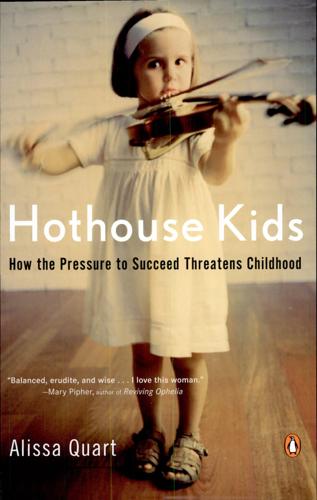
Hothouse Kids: The Dilemma of the Gifted Child
by
Alissa Quart
Published 16 Aug 2006
Similarly, child psychologists and educators argue that micromanaging children’s time and activities can impair children’s ability to manage themselves later in their life. Children who are unaccustomed to making their own choices may fail to develop autonomy or find a social community. This negative quality of some extreme parents has earned them the moniker “helicopter parents” in the popular media. Appearing in the book Millennials Go to College, coauthored by William Strauss and Neil Howe, the term was used to describe extreme parents, although not solely those of gifted children. Rather they were described as parents who “hover over the school at all times, waiting to drop in at the least sign of trouble.”
…
Sternberg (New Haven, Conn.: Yale University Press, 2002); Carol Dweck, “Caution—Praise Can Be Dangerous,” American Educator 23, no. 1 (1999); C. M. Mueller and C. S. Dweck, “Intelligence Praise Can Undermine Motivation and Performance,” Journal of Personality and Social Psychology 75 (1998). 139the moniker “helicopter parents”: William Strauss and Neil Howe, Millennials Go to College: Strategies for a New Generation on Campus (Washington, D.C.: American Association of Collegiate Registrars, 2003). 144a 2001 study by the National Institute of Mental Health: National Institute of Mental Health, In Harm’s Way: Suicide in America, a Brief Overview of Suicide Statistics and Prevention (Washington, D.C.: National Institute of Mental Health, 2003). 144“a paucity of research”: Tracy L.
…
See classes for infants and toddlers; gifted education ERB (Educational Records Bureau) test Erector sets Ericsson, Anders Erikson, Erik Evan Thomas Institute, Institutes for the Achievement of Human Potential (IAHP) experience-dependent and experience-expectant brain functions extreme parenting aggressiveness and competitiveness conferences and activities developmental stake in child’s future “helicopter parents,” homeschooling idealization of children, perception of childhood negative aspects and dangers of rejection of giftedness competition restraint in and self-perception of parents and sensitivity of gifted children FairTest Farrell, Tom Father and Son (Gosse) Fedoruk, Dennis Feldman, David Henry Fenton, Michael Fenton, Susan fetal enrichment auditory overstimulation risk supplements for Fine, Gary Alan Fineberg, Jonathan Fisher-Price Flynn effect in intelligence testing Forensics Tournament, Harvard National High School Invitational formulas, mind-enhancing Foster, Joanne Foster, Karen Francis, Clark Frankenstein (Shelley) Freud, Sigmund Fry, Roger games.
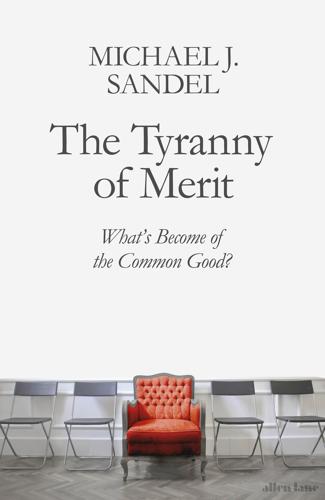
The Tyranny of Merit: What’s Become of the Common Good?
by
Michael J. Sandel
Published 9 Sep 2020
As the income gap grows, so does the fear of falling. Seeking to avert this danger, parents became intensely involved with their children’s lives—managing their time, monitoring their grades, directing their activities, curating their college qualifications. 13 This epidemic of overbearing, helicopter parenting did not come from nowhere. It is an anxious but understandable response to rising inequality and the desire of affluent parents to spare their progeny the precarity of middle-class life. A degree from a name-brand university has come to be seen as the primary vehicle of upward mobility for those seeking to rise and the surest bulwark against downward mobility for those hoping to remain ensconced in the comfortable classes.
…
This way of transmitting privilege is doubly objectionable. For those who lack the apparatus of advantage, it is unfair; for children entangled in the apparatus, it is oppressive. The meritocratic struggle gives rise to a culture of invasive, achievement-driven, pushy parenting that does not serve teenagers well. The rise of helicopter parenting coincides with the decades when meritocratic competition intensified. In fact, the use of “parent” as a verb only became common in the 1970s, when the need to prepare children for academic success came to be seen as a pressing parental responsibility. 64 From 1976 to 2012, the amount of time American parents devoted to helping their children with their homework increased more than fivefold. 65 As the college admission stakes grew, anxious, intrusive parenting became a common affliction.
…
We had become “so obsessed with our kids’ success,” Time observed, “that parenting turned into a form of product development.” The drive to manage childhood now began early. “Among 6-to-8-year-olds, free playtime dropped 25% from 1981 to ’97, and homework more than doubled.” 66 In an intriguing study, the economists Matthias Doepke and Fabrizio Zilibotti offer an economic explanation for the rise of helicopter parenting, which they define as “the heavily involved, time-intensive, controlling child-rearing approach that has become widespread over the last three decades.” They argue that such parenting is a rational response to rising inequality and increasing returns to education. Although intensive parenting has increased in many societies in recent decades, it is most pronounced in places where inequality is greatest, such as the United States and South Korea, and less prevalent in countries such as Sweden and Japan, where inequality is less acute. 67 Understandable though it may be, parents’ drive to direct and manage their children’s lives for meritocratic success has taken a harsh psychological toll, especially on pre-college teenagers.
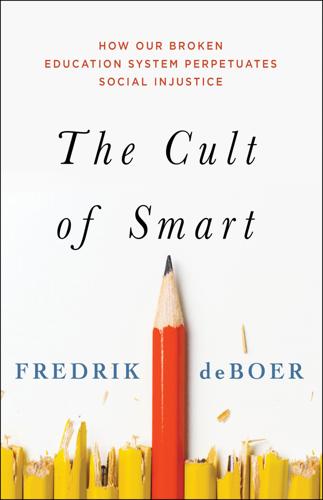
The Cult of Smart: How Our Broken Education System Perpetuates Social Injustice
by
Fredrik Deboer
Published 3 Aug 2020
They risked arrest, obviously. They spent huge sums of money, some of them paying in the hundreds of thousands of dollars individually, and as a group spent untold millions. They knowingly and deliberately falsified applications and misrepresented the high school careers of their children. In true helicopter-parent fashion these captains of privilege invested everything in the hopes of their children attending somewhat more prestigious colleges. From a purely actuarial sense, it’s debatable whether any of this made sense. Despite constant claims in the media that this has changed, the wage premium for having a college degree remains robust, although there are mountains of complication in those numbers, as we shall see.
…
See zero-sum game gaps achievement and performance gaps gender gaps Obama on education gaps racial achievement gaps wage gaps Gates, Bill Gattaca (film) gender achievement gap gender essentialism gender wage gap genetic assortative mating genetics and achievement gaps and Flynn effect Genome-Wide Association Study and parenting and pseudoscientific racism Three Laws of Behavioral Genetics twin and adoption studies and Wilson effect See also behavioral genetics Genome-Wide Association Study (GWAS) Gentleman’s C gentrification genuine socialism gifted student programs globalization and collegiate arms race and knowledge economy and neoliberalism Goldin, Claudia “good life,” the Gottfredson, Linda GPA, high school graduation rates college high school and loosening of standards and moral choice and selection bias and special-needs students of women Great Recession Great Society liberals Green, Thomas Hill Greene, Jay P. Hacker, Andrew The Math Myth Harden, Kathryn Paige Harlem Children’s Zone Harrington, Michael Harris, Judith Rich The Nurture Assumption Harvard University Hayes, Chris Twilight of the Elites Head Start health insurance Medicare for All single-payer health insurance helicopter parenting Heritage Foundation high schools elite high schools and employment GPA graduation rates high school under socialism Hunter College High School (New York) San Diego Metropolitan Career and Technical High School standardized tests as screening mechanism and winning in contemporary capitalist society housing gentrification socialized housing zoning humanities Hunter College High School (New York) Hurricane Katrina In Search of Human Nature: The Decline and Revival of Darwinism in American Social Thought (Degler) ignorance, veil of definition of and meritocracy and morality immigrants and immigration and alt-right “immigrant advantage” income inequality inconspicuous consumption influencers Instagram intelligence and IQ and behavioral genetics and Cult of Smart heritability of intelligence as polygenic trait myth of equal inherent ability and nature-nurture debate and neoliberal capitalism new socialist vision of and “race realism” SNPs and heritability of intelligence and Wilson effect See also talent international students iPads IQ.
…
No Child Left Behind (NCLB) “no excuses” education reform norm referencing North American Free Trade Agreement Nurture Assumption, The (Harris) nurture versus nature debate Obama, Barack on education as anti-poverty program on education as economic leveler on education gaps Education Secretary Arne Duncan and end of No Child Left Behind on equal opportunity and goal of more college-educated youth 2012 State of the Union address universal pre-K initiative Obamacare (Affordable Care Act) Ocasio-Cortez, Alexandria Office, The (television program) Office Space (film) opportunity, equality of and behavioral genetics and blank-slate philosophy of education and Dewey, John impossibility of and income inequality and liberalism and mobility and morality Obama, Barack on and poverty and progressivism and racism outcomes, equality of outcomes, plasticity of Palmer, Brian parenting and behavioral traits competitive parenting helicopter parenting and home environment and public policy under socialism and twin studies and universal childcare People’s Policy Project performance and achievement gaps pharmacy education phrenology Pinker, Steven The Blank Slate plasticity of outcomes Plomin, Robert positive liberty posters, aspirational and motivational postsecondary education degree creep and inequality master’s degrees and master’s programs PhDs professional degrees poverty and achievement gaps “controlling for poverty” “culture of poverty” and early childhood and equality of opportunity and mobility and selection effects and universal basic income and universal childcare premature birth professional degrees Programme for International Student Assessment (PISA) progressivism and discomfort with inherent ability and education as economic leveler and educational funding and equality of opportunity and Medicare for All on negative and positive liberty and social inequality and social mobility and student loan debt forgiveness and universal childcare and veil of ignorance ProPublica pseudoscience and behavioral genetics eugenics phrenology pseudoscientific racism public schools, blame placed on Purdue University “race realism” race science racial achievement gaps racism Act Now to Stop War and End Racism (ANSWER) and aspirations to winning and behavioral genetics durability of and equality of opportunity pseudoscientific racism and “race realism” scientific racism structural racism and veil of ignorance Rand Education Rawls, John Reeves, Richard reform.

Visual Thinking: The Hidden Gifts of People Who Think in Pictures, Patterns, and Abstractions
by
Temple Grandin, Ph.d.
Published 11 Oct 2022
You can’t learn the value of something, and you certainly can’t gain any independence if other people do everything for you. Julie Lythcott-Haims, a former dean and associate vice provost at Stanford University, described the “helicopter parent” in her 2015 book How to Raise an Adult, sounding an alarm about parents who overprotect and do too much for their children. Helicopter parenting produces smart adults who do not have the skills to live independently. When I was in college in the 1970s, my mother didn’t call my professors to find out how I was doing in a particular class. It’s not that she wasn’t concerned.
…
Today it’s not uncommon for parents to contact professors to express concerns about a student’s workload or to dispute a grade (it’s happened to me). Some parents I’ve spoken with have shared that they’ve even called their child’s workplace to solve a problem, or just to check in with the boss. There is a new breed of parents who are even more overprotective than the helicopter parents. They are the snowplows and bulldozers. They can’t bear for their child to experience any adversity at all, so they clear a path for them. Snowplow parents are not doing their child a favor, either, because a child raised with this kind of constant intervention will never learn to solve problems.
…
D’Agostino Greenberg Music School, 29 Filtergraph, 105–6 Finkemeier, Marie-Antonine, 269 Fisher, Karla, 100–101 Fitzgerald, Michael, 172 5G cell phone service, 231–32 Flaubert, Gustave, 176 Flint, Michigan, 202 Florida State University, 188 fMRI (functional magnetic resonance imaging), 23, 26, 39 food-processing industry/plants, 76, 91–93, 96, 130–31 food supply business, 3–5 Forbes, 73, 113 Ford, Henry, 90, 126 Forest City Gear, 92–93 Fort Collins, Colorado, 204 Foster, Craig, 267 Frames of Mind: The Theory of Multiple Intelligences (Gardner), 64–65 Fraser, Donald, 144 Frener & Reifer, 5 Frith, Uta, 12–13, 166 Fritsch, Gustav, 22 Frontiers in Psychology, 215 Fukushima Daiichi nuclear power plant, 6, 223–28 Daini nuclear power plant, 224–27, 235 fusion reactor designs, 152–53 Future Farmers of America (FFA), 91 G Gage, Phineas, 23 Gallup, Gordon, 258 Galton, Francis, 167–68 game theory, 160–61 García, Lily Eskelsen, 51 Gardner, Howard, 64–65, 176 Gates, Bill, 70, 124, 180–81, 183, 190 genetics and animals, 199, 245–46, 260, 263, 269–71 and autism, 28, 44, 162, 166–67, 271 careers in, 108–9 and creativity, 156 geniuses and, 165–71 of human brain, 28, 162, 166–67 genius allowing development of, 189–91 attempts to explain it, 156 definition/hallmarks of, 180, 184–91 and dyslexia, 174–78 genetics of, 165–71 geniuses Asperger’s and, 163–64, 181–82 autism and, 15–16, 155–57, 164, 172–74, 181, 189 brains of, 187–89 coders/computer programmers, 178–83 and deciphering of Rosetta Stone, 146–48 need for mentors and exposure, 158–59, 173 poor performers in school, 155–57, 159, 174–76 schizophrenia and, 160–61 and spatial/object thinking, 156, 173–75, 186 as visual thinkers, 6, 138, 174–78, 182–83, 187–89, 191 See also inventors; specific names Gennari, Francesco, 21 genomic trade-offs, 28, 44, 162, 175 Germany, 5, 22, 32, 82, 94–95, 180, 256, 269 Gibson, Eleanor J., 194–95 Giger, Walter, 129 Ginsburg, Noel, 114 Glickstein, Mitchell, 21 Go (game), 232–33 Goldberg, David E., 63 Goldberg, Elkhonon, 184 Golden Gate Bridge, 208 Goldman Sachs, 104–5 Goodall, Jane, 248, 260 Goodson-Espy, Tracy, 62 Google, 2, 116, 124, 148, 232–34 Goyal, Nikhil, 51 Grain Resolution Test, 33 Great Chain of Being, 241–42 Griffin, Edward, 99 Grit (Duckworth), 99 Gropius, Walter, 133 Gualtieri, Camillo Thomas, 28 Gutenberg, Johannes, 90 H Haciomeroglu, Erhan, 74 Hacker, Andrew, 57–58 Halfon, Eyal, 240 Halsey, Brad, 46 Hammerstein, Oscar, 6, 150–51 Handshake (job search website), 117 Happy (elephant), 244 Harris, Elizabeth A., 72 Harvard, 31, 70, 105, 142, 181, 249 Harvard Business Review, 105, 223 Harvey, Allison, 41 Haskell, Molly, 174 Hawking, Stephen, 17 health care workers, 96, 114 health insurance business, 201 Hearing the Voice project, 13 Heathcoat Fabrics, 93 Hegarty, John P., 170 helicopter parents, 77–78 Hendren, Sara, 130 Herculano-Houzel, Suzana, 253 Hewlett Packard Enterprise, 105, 139, 183 Hickenlooper, John, 114 Hidden Life of Dogs, The (Thomas), 271 high-definition fiber tracking (HDFT), 25 Hill, Erica, 240 Hill, Peter, 93 Hines, William C., 200 Hitch, Graham J., 14 Hitzig, Eduard, 22 Höffler, Tim, 32 Holmes, Elizabeth, 152 home economics, 42, 50–51, 53 Home Insurance Building (Chicago), 134–35 homeschooling, 65–67, 100, 157–58 Hopper, Grace Murray, 17 Horgan, Rob, 209 horses and emotion, 259 hands-on work with, 66, 76, 98 laws to protect, 242–44 training of, 246, 267–68 and visual thinkers, 190–91, 268, 274 How to Raise an Adult (Lythcott-Haims), 77 Howe, Elias, 50, 85, 87–88 Hubbard, Douglas W., 201 Hubble Space Telescope, 47, 97, 197 Hug Machine, 190–91 human-animal relationship, 11–12, 100, 238, 247–48, 267–73 Hunt, Gavin, 259 Hunt, Ray, 268 Huntington Ingalls Industries, 109–10 hyperphantasia, 39–42 I IBM, 117, 197–98 IKEA, 176 IKEA Test, 17 Illinois Valedictorian Project, 75–76 In the Mind’s Eye (West), 83, 173–74 Individualized Education Program (IEP), 66, 82 Individuals with Disabilities Education Act (IDEA), 82–83 industrial designers, 3, 106–7, 132 versus engineers, 126–27, 134, 196 as object visualizers, 32–33, 91, 126–27, 134, 196 See also drawing/drafting: and industrial design infrastructure, 6, 55, 79, 119, 202–5, 223, 276–77 Innovation Boot Camp, 46 innovators.

Karl the Fog
by
Karl the Fog
Published 14 Apr 2019
And she suffered through the Summer of Love, when it became impossible to tell where the parties in Golden Gate Park ended and her clouds began. I grew up over Drakes Bay—a lovely sky community in Point Reyes, fifty miles north of San Francisco. Thanks to my protective parents, I lived a sheltered life. Quite literally, since there was no way for us to be in the same place without them physically hovering over me. Meet the original helicopter parents. I rarely made it down to the city because I loved all the open space of the North Bay. Neighbors were far and few between, traffic was light, and I had an enormous backyard to do flips and somersaults. But in September 2006, after working thousands of years, my mom said she was retiring, and it was time for me to take over the family business.
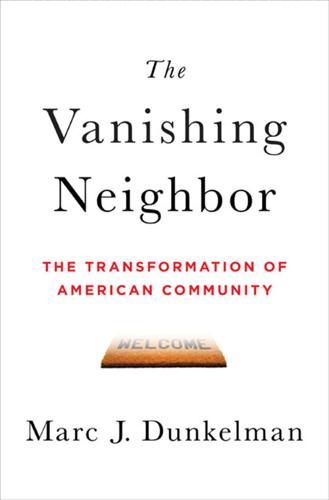
The Vanishing Neighbor: The Transformation of American Community
by
Marc J. Dunkelman
Published 3 Aug 2014
The average number of weekly hours that mothers spent caring directly for their children grew from ten in 1965 to thirteen in 2000; among fathers, the number more than doubled from three to seven over the same thirty-five-year span.11 As Fischer once explained to me, our perception is that families are eating at home less, but if the substitute is to go out for dinner, the net outcome may reveal that their time together has not diminished at all.12 By another standard, in fact, the problem isn’t that American children are getting too little parenting—it’s that they’re getting too much. The term “helicopter parent” found its way into the popular lexicon because of concern that children are being micromanaged, sometimes well into their early adulthood.13 The percentage of Americans between the ages of twenty-five and thirty-four living with their parents—quite high in the early postwar years when multigenerational households were more common—nearly doubled between 1980 and 2010, from 11 percent to more than 21 percent.14 Maybe most important, 63 percent of those between the ages of eighteen and thirty-four know someone who has moved back in.
…
Brashears, “Social Isolation in America,” American Sociological Review 71 (June 2006): 361. 11Suzanne Bianchi, John P. Robinson, and Melissa A. Milkie, Changing Rhythms of American Family Life (New York: Russell Sage Foundation, 2006), 63. 12Conversation with Claude S. Fischer, March 15, 2012. 13Stephanie Armour, “ ‘Helicopter’ Parents Hover When Kids Job Hunt,” USA Today, April 23, 2007; Jennifer Finney Boylan, “A Freshman All Over Again,” New York Times, August 23, 2012. 14Kim Parker, “The Boomerang Generation: Feeling OK about Living with Mom and Dad,” Pew Research Social & Demographic Trends, March 15, 2012. 15Parker, “The Boomerang Generation,” 6–7. 16“Families Drawn Together By Communication Revolution.”
…
(Eisenhower administration), 14, 51, 58, 65, 100, 190 elderly people, 196–211 independence of, 197, 203, 207, 208–9 elections, U.S., 15, 50, 56, 187, 190 Chinatown Bus effect and, 47 gerrymandering and, xvi, 182–87, 189 of 2012, 7, 37–38, 184–85 Elks Lodges, 44, 116 e-mail, xi, 8, 109–10, 125, 145 End of History, The (Fukuyama), 230–31 England, xii, 81, 82, 157, 158, 166–67, 179, 194 entrepreneurialism, 82, 164 ethnicity, 32, 79, 147, 148, 231, 237 ethnic tensions, 4, 39 Europe, 81, 226, 230, 232 evangelism, 42, 71 evolution, 90–91 expectations, 30, 60, 70–71, 82 Facebook, 37–38, 45, 48, 108, 114, 124–25, 140, 145, 148–49, 152, 190, 194, 219 faith, loss of, xv, xvii, xviii, 14, 181–82, 193, 195 family, 70, 119, 125, 129, 139, 194 affirmation and, 104–7 extended (traditional), 12, 15, 16, 26–27, 68, 97, 106 health care and, 201, 210 income inequality and, 21–22 nuclear, 16, 26, 32, 84, 145 in Saturn model, 95, 96 single-parent, 26, 30–31, 43, 105, 216 Farmer, Paul, 64 fathers, 12, 106, 131 of author, 132–33, 134, 240 fax machines, 16, 35, 74 fear, 71, 84, 119, 128, 157, 233, 235 of hitchhiking, 133, 134, 135 homosexuality and, 42 quality of life and, 50–52, 55–57, 60 Federal Express, 147–48 Ferguson, Niall, 229 Fiddler on the Roof (musical), 69–70 filibuster, xvi, 182, 185, 188, 191, 248n Filter Bubble, The (Pariser), 37 Fiorina, Morris, 139 First Wave society, 16, 20, 31–32, 233 Fischer, Claude, 87, 88, 105, 106, 128–29, 237–38 Fishkin, James, 192–93 Florida, Richard, 83, 175 food, 51, 58, 62, 79, 136–37, 202 brain and, 90–91 see also agriculture Ford, Gerald, 47 Fortune, 4–5, 14 Fowler, James, 96 Fox News, 184, 187–88 France, 80 Franklin, Rosalind, 161 Freakonomics (Levitt and Dubner), 7, 133–34 freedom, 25, 26, 43, 49, 52, 60, 67, 82, 102, 161, 207 French and Indian War, 157 Friedman, Thomas, xiv, 17–21, 24, 141–42, 151–52, 240 friends, 8, 12, 24, 25, 91, 95, 99–100, 101, 119, 120, 122, 124, 152, 194 affirmation from, 102–3, 104, 107, 110, 111 agreement of, 148–49 health care and, 201, 210 Fukuyama, Francis, 230–31 Galbraith, John Kenneth, 52 Gans, Herbert, 144–45 Gates, Bill, 10 gay marriage, 42, 50, 69 GDP (gross domestic product), 17, 53, 99, 180, 198, 227, 230 gemeinschaft, 86 General Social Survey, 105, 119–20, 260n–61n generational succession, 135 genetics, 160–62 genius, 159, 160, 162 Genovese, Kitty, 84–85 Georgetown University, 118 gerrymandering, xvi, 182–87, 189 ghettos, 128 Gingrich, Newt, 14, 15 Gini coefficient, 22, 23 Girls (TV show), 30 Gladwell, Malcolm, 6, 91–92 globalization, 17–18, 20, 50, 138, 141, 152, 221 global village, 16, 142–43 Google, 37, 194 government, U.S., xii–xviii, 52, 67, 200, 234 dysfunction of, 181–90 French government compared with, 80 health care and, 201–5 public frustration with, xiv–xvii, 181–83, 195 urban decay and, 127 Graduate, The (movie), 4, 28, 30, 248n Granovetter, Mark, 168–69, 266n Great Depression, 60, 68, 85, 202–6, 210, 226 Greatest Generation, 51, 70 Great Migration, 40–41, 43, 137 Great Recession, xv, 54, 55, 62, 106 Great Society, 210, 255n Gresens, Mr., 220–22, 225 grit, 5, 6, 216–25 Grove, Andy, 10 Guest, Avery, 118 Gutenberg, Johann, 162 “habits of the heart,” 81, 89, 115, 138, 258n Habits of the Heart (Bellah), 65–66, 141, 258n Hampton, Keith, 118–19 Harlem Children’s Zone (HCZ), 222, 224 health, health care, 101, 197–211 costs of, 198–200, 204–5, 206, 209–10 public, 197, 199, 204 quality of life and, 31, 51, 52, 57–60, 204 Hearst, William Randolph, 188 heart attack, 58, 200, 207 Heckman, James, 223 helicopter parent, 106 Henry, Peter Blair, 179–81 history, 51, 59, 67, 68, 230–34 affirmation and, 109, 110 of American community, 79–89 Dunbar’s number and, 94 Tofflers’ view of, 15–16 hitchhiking, 132–35 Hoffman, Dustin, 28 homogeneity, 46–47, 135, 147–48, 189, 191 homophobia, 42, 43, 51 homosexuality, 42–43, 87, 88 hospitals, 197, 199–204, 206–7 House of Representatives, U.S., xvi, 182, 184–85, 186 Hout, Mike, 237–38 Hughes, Charles Evans, 187 Hunter, James Davison, 69 hunter-gatherers, 16, 92, 142, 144–45 Hussein, Saddam, 67 Hutterites, 94 identity, 20, 42, 74, 130, 146 immigrants, 79, 82–83, 88, 232 income, xv, 21, 147, 180, 216, 227 discretionary, 55 inequality and, 21–24, 31 national, 21–22, 54 online communities and, 250n working women and, 27, 28 independence, 28–29, 30, 52, 57, 60, 106, 138, 151 of elderly, 197, 203, 207, 208–9 individualism, 65–66, 73, 74, 102 networked, 111 industrial paradigm, 14–15, 26, 82, 84–87, 170–71, 233 Industrial Revolution, xiii, 4, 16, 85, 86, 127, 138, 166, 201 inequality, economic, 21–24, 26, 31 information, 6–8, 18, 21, 26, 138, 260n brought together in a new way, 159–66, 209 Chinatown bus effect and, 35–38 information technology, 13, 16, 125, 141–43, 187, 209 affirmation and, 103–4, 108, 109–10 online communities and, 114–15 infrastructure, xiv, xv, xvi, 11, 25, 45, 194, 236 decay of, 229, 230 health, 200–201, 203–4, 206, 210 Inglehart, Ronald, 67–69, 73 inner directedness, 5–7 inner-ring relationships, see intimate relationships innovation, xiii, xvii, xviii, 158–75, 209 intellectual cross-fertilization, 158–68 interdependence, 17, 85–86 intermarriage: educational, 43–44 racial, 68 Internet, 10, 18, 36, 37, 121, 125, 146, 250n interracial marriage, 68 intimate relationships (inner-ring relationships), 92, 93, 96, 119–20, 137, 138–39, 145, 238 affirmation and, 103–7, 110, 112, 115 Chinatown Bus effect and, 42–46 health care and, 201, 204, 210 see also marriage iPhones, 160, 231 Iraq, 67 isolation: intellectual, 176 social, 73, 87, 113, 115, 118–19, 122, 127, 149, 207 Issacson, Walter, 164 Italy, 17, 163 It Gets Better Project, 43 Jackson, Kenneth, 40 Jacobs, Jane, 85–88, 127, 166–68, 170, 176 Jamaica, 179–81, 191 James, LeBron, 8–9 Japan, 226, 233 Jews, Orthodox, 98–99 jobs, 18–20, 23, 24, 27, 29, 30, 131, 139, 170–71, 235–36, 260n–61n affirmation and, 104–5, 107 assembly line, 53, 85 exporting of, 197–98 service, 18–19, 53, 132, 138, 236 Jobs, Steve, 10, 64, 160, 164–65 Johansson, Frans, 163, 168, 172 Johnson, Lyndon B., 127, 187, 210 Johnson, Steven, 159 Kahneman, Daniel, 13 Kelling, George, 150 Kelly, Mervin, 164 Kennedy, Robert, 206 Kenner, Edward, 158, 159 Kentucky, 147–48 Kerry, John, 47 Keynes, John Maynard, 53 Khrushchev, Nikita, 56 King, Martin Luther, Jr., 24, 46, 108–9, 128, 238 King, Stephen, 123 Kiwanis Club, 44, 45, 116 “Knowledge Is Power Program” (KIPP), 222, 223, 224 Koestler, Arthur, 158–60, 162, 166 Krebs cycle, 220–22 Ku Klux Klan, 111, 146 labor, labor unions, 14, 19, 20, 23, 53, 180, 181 leadership, xv, xvii, 23, 101, 108–9, 182, 186, 191 Leave It to Beaver (TV show), 34–35, 51 legislative districts, manipulation of (gerrymandering), xvi, 182–86, 189 Lehigh Valley, 170, 171 leisure, 53, 104–5, 139 Levin, David, 223 Levitt, Steven, 133–34 Lexus and the Olive Tree, The (Friedman), 141, 151–52 LGBT rights, 24, 42–43 libraries, 18, 36, 37 lifespan, longevity, 17, 31, 57–60, 62, 199, 204–5 Lincoln, Abraham, 228 Ling, Richard, 122–23 Lipset, Seymour Martin, 231 LISTSERVs, 114, 151 Little House on the Prairie (TV show), xii, 247n lobbyists, 183, 187, 229 Locke, Richard, 165, 172 Lonely Crowd, The (Riesman), 5–6, 7, 65, 141 Loose Connections (Wuthnow), 239 Lorain, Ohio, 79–80, 135 “lord of the manor” community, xii–xiii, 81 Lowery, Rev.

The Other Side of Happiness: Embracing a More Fearless Approach to Living
by
Brock Bastian
Published 25 Jan 2018
To this end, we seek to protect them from experiencing failure or disappointment in life, and instead we bolster their self-esteem. Yet, in so doing we are not making them better people or more proactive members of society; rather we are increasing their self-importance and self-entitlement. THE RISE OF THE HELICOPTER PARENT As parents, we seem to be hovering over our children more than before. A study conducted in 2004 by Liana Sayer and her colleagues confirms this suspicion.10 She asked parents to fill in a time diary for a 24-hour period, indicating what their primary activities were over that time. Contrary to received wisdom, she found both mothers and fathers reported spending greater amounts of time caring for their children in the late 1990s than in the ‘family-oriented’ 1960s.
…
Other crimes against children aged twelve to seventeen years old have also declined, including simple assault (down 59%), robbery (down 62%) and larceny (down 54%). The evidence is running counter to our intuition on these matters: instead of becoming more dangerous, the world is in fact becoming significantly safer. So why the helicopter parenting? There are two possible answers to this question. The first is that while aggression, violence and crime are in decline, so is our trust in others. Robert Putnam, in his book Bowling Alone,13 documents how people are less likely to rely on others than ever, marking a decline in ‘social capital’.

Giving the Devil His Due: Reflections of a Scientific Humanist
by
Michael Shermer
Published 8 Apr 2020
We now know that 2013 was a pivotal year as this is when the iGen (or Gen Z) generation of students born in 1995 or after began to enter college, and as Greg Lukianoff and Jonathan Haidt demonstrate in their 2018 book The Coddling of the American Mind, this generation differs significantly from Millennials (born after 1981), Gen Xers (born mid 1960s), and Baby Boomers (born after the Second World War), most notably in how they were raised (helicopter parenting) and what that means for how a “coddled” generation handles challenges. But there is much more to the story as I see it, and this article is my hypothesis of what went wrong. * * * The French political journalist and supporter of the Royalist cause in the French Revolution, Jacques Mallet du Pan, famously summarized what often happens to extremists: “the Revolution devours its children.”1 I was thinking about this idiom – and it’s doppleganger “what goes around comes around” – while writing a lecture for a talk I was invited to give at my alma mater, California State University, Fullerton, on the topic: “Is freedom of speech harmful for college students?”
…
A feminist blogger named Melody Hensley, for example, claims that years of online stalking and social-media trolls gave her PTSD on par with that of combat soldiers, disabling her from being able to work. Not surprisingly, war vets were not sympathetic.22 (3) From Anti-Fragile to Fragile Children. One response to the 1970s and 1980s crime wave was a shift toward “helicopter parenting” in which children were no longer allowed to be, well, children. The social psychologist Jonathan Haidt explains why through the concept of anti-fragility: Bone is anti-fragile. If you treat it gently, it will get brittle and break. Bone actually needs to get banged around to toughen up. And so do children.
…
H., 295 Grobman, Alex, 20, 78 Gross, Paul, 317 gun control denying publicity to mass murderers, 179–180 effects in Austria, 187–190 high-capacity magazines, 175 proposals for, 179–180 proposals to prevent Sandy Hook Events, 171–175 rights of citizens and, 175–176 statistics for individual homicides and mass killings, 163–165 gun control debate deaths from gun violence compared to terrorism violence, 191–192 defense against tyranny argument, 178–179 different metaphors for the nation as a family, 192–197 link between gun onwership and gun deaths, 182–191 machine gun regulation and restriction, 191 self-defense argument, 177–178 views of John Lott, 182–191 what conservatives and liberals really differ on, 192–197 gun culture effectiveness of gun controls, 29 gun law reform Australia, 174–175 guns in the home statistics for deaths related to, 164–165 Guth, Alan, 122 Haidt, Jonathan, 65, 74, 132, 245, 303 Hamlet, 265 Hancock, Graham claim of an ancient lost civilization, 311–327 Handbook of Philosophy and Public Policy, 44 Harari, Yuval Noah, 130 Hare, Robert, 165 Harrett, Clark, 238 Harris, Eric, 169 Harris, Sam, 87, 241, 304 Harvey, William, 229 hate speech question of banning, 28–37 response to, 13–16 Have Gun – Will Travel (television show), 298 Hawass, Zahi, 315 Hawking, Stephen, 111, 124–125 Hayek, Friedrich, 216–217 Heavens on Earth (Shermer), 103, 109, 310 hedonic treadmill, 201, 202, 210 helicopter parenting, 65, 74 Hemenway, David, 186 Hensley, Melody, 73 Herschel, John, 45 heuristics, 23–24 Heyerdahl, Thor, 315 Heying, Heather, 303 hindsight bias, 24 Hitchens, Christopher, 1, 16, 55, 82, 87, 210debate about his beliefs, 276–281 dinner and drinks with, 282–286 on freedom of speech, 3–6 on hate speech, 13 sense of loss following his death, 276 Hitchens’ Dictum, 5–6 Hitchens’ Theorem, 5 Hitler, Adolf, 28, 31 HMS Bounty mutineers society on Pitcairn Island, 156–159 Hobbes, Thomas, 139, 229, 240, 309 Hoffman, Donald, 305–306 Holmes, James, 170 Holmes, Oliver Wendell, Justice, 1, 2–3, 16 Holmes’ Axiom, 3 Holocaust denial, 5, 20–21, 22–23, 38–43as a criminal act, 38–43 Hooker, Joseph, 45, 287 Horowitz, David, 282 Houdini, Harry, 270, 283 how lives turn out free will–determinism debate, 264–265 human nature and, 256–258 Just World Theory, 255 role of contingency, 258–264 role of environment and society, 258–264 role of luck, 258–264 Unjust World Theory, 255–256 views on important influences, 255–258 How We Believe (Shermer), 87 Hubbard, L.
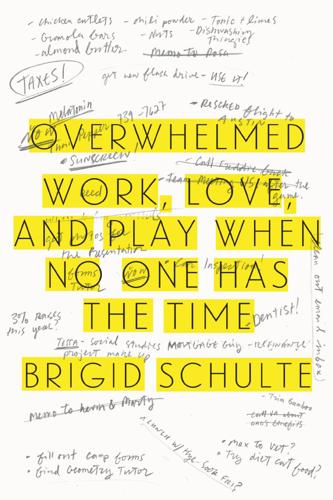
Overwhelmed: Work, Love, and Play When No One Has the Time
by
Brigid Schulte
Published 11 Mar 2014
She took her children to mosques when they studied Islam, started classes at 11 a.m. when their teenage brains needed more sleep, and had days when they all stayed in their pajamas and just read. She organized summer camps where kids played in the creek behind her house and when the cicadas swarmed, baked insect cookies with them. “Perhaps I’m guilty of being the worst helicopter parent ever,” she said. “But I don’t think I could have found a way to spend my time in any way that was actually more valuable.” So who’s right? What’s best? More important, how do we stop this “perfect madness”? * * * A group of mothers sits around a long table at a busy café in Portland, Oregon.
…
José Martinez, “Manhattan Mom Sues $19K/yr. Preschool for Damaging 4-Year-Old Daughter’s Ivy League Chances,” New York Daily News, March 14, 2011, www.nydailynews.com/new-york/manhattan-mom-sues-19k-yr-preschool-damaging-4-year-old-daughter-ivy-league-chances-article-1.117712. 3. Jennifer Ludden, “Helicopter Parents Hover in the Workplace,” All Things Considered, National Public Radio, February 6, 2012, www.npr.org/story/146464665. 4. Annette Laureau, Unequal Childhoods: Class, Race, and Family Life (Berkeley: University of California Press, 2003). 5. Tony Snow, “The Lewinsky Principle,” Jewish World Review, March 8, 1999, www.jewishworldreview.com/tony/snow030899.asp. 6.
…
Hammer, Leslie Hanley, Caroline Hansen, Orval Happy Endings (TV show) Harding, Hillary Hartman, David Hartman, Heidi Harvard Business Review Harvard Business School Harvard University Haskins, Greg Hawkes, Kirsten Hays, Sharon: The Cultural Contradictions of Motherhood Hazda women Head Start Health and Human Services, Department of health care; costs; ER heart disease heart rate Heckman, James Heidegger, Martin helicopter parenting Henderson, Karla Heritage Foundation Herr, Jane Leber Hewlett, Sylvia Ann Heyck-Merlin, Maia Hicks, Kathleen Hochschild, Arlie: The Second Shift holidays Holt, Luther Emmett Hölzel, Britta homeschooling homework homosexuality hormones; stress hotels; labor Hot Mommas Project housework; breadwinner-homemaker stereotype; Danish; gay couples and; gender equity issues; men and; women and housing prices Hout, Michael Hrdy, Sarah Blaffer; Mother Nature; Mothers and Others Hsee, Christopher Huizinga, Johan Hunnicutt, Ben hunting-and-gathering societies hurricanes Hypertherm hypothalamus Iacocca, Lee IBM Iceland ideal mother ideal worker; breadwinner-homemaker stereotype; dumping the; evidence against; parental leave and; “separate spheres theory”; staying power of; stereotype; stress; wage gap immigrants immune system; effect of stress on Implicit Association Test India industrialization infertility inflammation information; overload Institute for Social Research, Hague integration intensive mothering; ambivalence and; Danish; fear and; guilt and; mommy wars International Association for Time Use Research; Paris conference Internet iPhone Ireland Issa, Darrell Italy Jacobs, Jerry: The Time Divide Japan Javitz, Jacob Jensen, Elisabeth Møller Johansson, Thomas: New Swedish Father Joly, Hubert Judaism Jump Associates Kaibel, Howard Kappaz, George Keefer, Catherine Kelly, Erin Kennedy, Eden: Let’s PANIC About Babies!
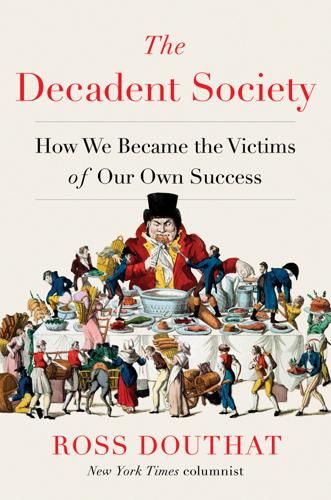
The Decadent Society: How We Became the Victims of Our Own Success
by
Ross Douthat
Published 25 Feb 2020
In the era of the teen TV soap Beverly Hills, 90210, which premiered in 1990, 10 percent of adolescents had lost their virginity before age thirteen; only 4 percent enjoyed that dubious distinction in the age of Snapchat. “Today’s teens are better than you, and we can prove it,” ran a 2016 data-journalism headline—and the data, indeed, proved that teenage life in the 2010s was physically safer than at any point in the recent American past. Maybe teenage life is safer today because of helicopter parenting or better policing or successful anti-alcohol education in the schools. But it’s likely that there’s been a general substitution of electronic entertainment and virtual communication for real-life behaviors that led past teenagers into peril and temptation. Whether it’s video games or pornography or just the buzz of online social life, the virtual makes it possible to spend a social (or at least “social”) teenage life much more indoors and at home than in the past, which in turn reduces the risks that come with driving too fast, partying too late, drinking too much, hooking up incautiously, and generally behaving in the ways that traditionally made adolescence dangerous.
…
In the last few decades, our universities have distinguished themselves by promising seemingly incompatible things to their two customer bases: to the parents footing the bill, they promise safety, supervision, and an environment where the precious children of the upper-middle class will be tended with all the care that helicopter parents expect; to the kids actually making the choice, they promise a long Rumspringa—a four-year holiday from both childhood rules and adult responsibilities, in which the debauchery of Animal House or Old School is supposed to be included with tuition. Harmonizing those two promises is the task of the ever-expanding college bureaucracy, whose mission is to protect the health and well-being of its student body without resorting to oppressive moral virtues such as chastity and temperance that might bring the party to a halt.
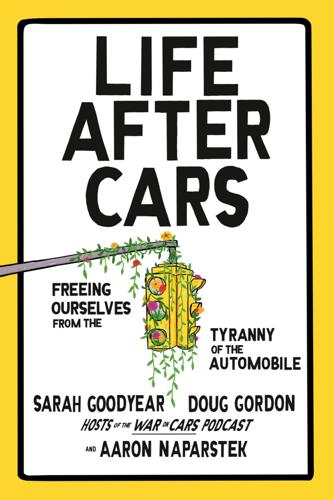
Life After Cars: Freeing Ourselves From the Tyranny of the Automobile
by
Sarah Goodyear
,
Doug Gordon
and
Aaron Naparstek
Published 21 Oct 2025
Lange believes that despite the negative stereotypes of overprotective “helicopter parents,” Americans who are uncomfortable letting their children wander independently due to the threat of traffic violence have reality on their side. “It’s not an irrational fear on parents’ part to not want kids to go around on their own if they have to cross a lot of streets. Kids being threatened by cars is backed up by facts. And bigger cars, faster moving traffic…all of that has only increased the danger to kids.” Sean Kenney said it took some time for him and his wife to shed their American tendency toward at least a little bit of helicopter parenting. “My kid is responsible, so we got him the keys and were okay with him walking home from school by himself while my wife and I were at work, but I wasn’t ready to let him wander the neighborhood at that age.”

Irreversible Damage: The Transgender Craze Seducing Our Daughters
by
Abigail Shrier
Published 28 Jun 2020
See Grace Harmon, “More Than Half of the Student Body at Evergreen Identifies as LGBTQ or Questioning,” KNKX, February 18, 2020, https://www.knkx.org/post/more-half-student-body-evergreen-identifies-lgbtq-or-questioning . 29 . “Trans @ UCLA: UCLA is a Top 10 Trans-Friendly Campus!,” UCLA Lesbian Gay Bisexual Transgender Resource Center, https://www.lgbt.ucla.edu/Trans-At-UCLA . 30 . Amy Joyce, “How Helicopter Parents Are Ruining College Students,” Washington Post, September 2, 2014, https://www.washingtonpost.com/news/parenting/wp/2014/09/02/how-helicopter-parents-are-ruining-college-students/ . 31 . See “Colleges and Universities that Cover Transition-Related Medical Expenses Under Student Health Insurance,” Campus Pride, 2019, https://www.campuspride.org/tpc/student-health-insurance/ .
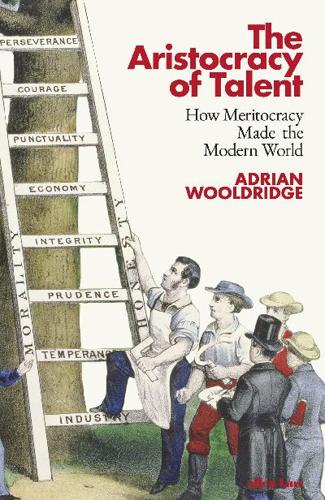
The Aristocracy of Talent: How Meritocracy Made the Modern World
by
Adrian Wooldridge
Published 2 Jun 2021
Parents are so worried about giving their children a leg-up that there is now a literature devoted to the problem of ‘helicopter parents’ who hover over their children’s lives, ferrying them from piano lessons to algebra camps to coding clubs in order to squeeze the maximum value out of their every waking hour, helping them with their homework to the point of actually doing it for them. Many American schools have a ‘parent portal’ that allows parents to see whether their children turned up for class and what grade they got. Helicopter parenting can extend to the student years. Some British universities have complained that they have so many parents coming to their open days that there is not enough room for potential students.
…
American parents have been found sleeping in their dorms along with their student-children. Graduate programmes are rife with stories of parents accompanying their graduate-student offspring to interviews. Parents have even been known to accompany their adult children to job interviews. One step up from helicopter parenting is tiger parenting. Amy Chua, a Yale law professor, caused a stir in 2011 with her semi-autobiographical the Battle Hymn of the Tiger Mother. Her argument, summed up in an article in the Wall Street Journal, went like this: A lot of people wonder how Chinese parents raise such stereotypically successful kids … Well, I can tell them, because I’ve done it.

Ghost Road: Beyond the Driverless Car
by
Anthony M. Townsend
Published 15 Jun 2020
By 2018, more than 90 percent of American teens owned or had access to a smartphone, and almost all had a computer or game console at home. It didn’t take a rocket scientist to see that teenagers had their faces buried in phones and tablets far too much to take driving seriously for long. What’s more, a new breed of helicopter parents was all too eager to enable them. As The Atlantic reported in 2017: “For some, Mom and Dad are such good chauffeurs that there’s no urgent need to drive. . . . Teens today described getting their license as something to be nagged into by their parents—a notion that would have been unthinkable to previous generations.”
…
GM’s Super Cruise, introduced in 2017, sports a full-fledged driver-surveillance system, with an infrared head-tracking camera “pointed at the driver’s face.” The system starts nagging if you look away for more than five seconds. Keep ignoring it, and after 15 seconds it disengages. If Tesla is an absentminded babysitter, Super Cruise is a helicopter parent. I don’t envy the designers of Autopilot and Super Cruise. Making partial-self-driving technology both roadworthy and appealing to car buyers isn’t easy. In aviation, an entire science of “crew resource management” emerged in the 1980s to reduce the risks of heavy cockpit automation. Comparatively speaking, automakers are just getting started.
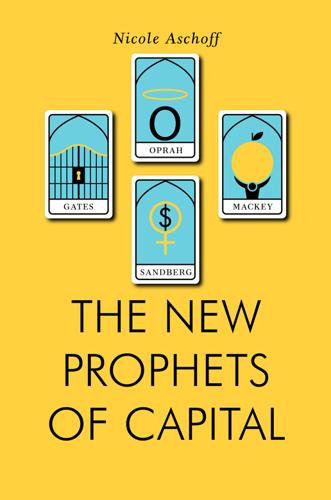
The New Prophets of Capital
by
Nicole Aschoff
Published 10 Mar 2015
But instead of examining the economic or political basis of these feelings, she advises us to turn our gaze inward and reconfigure ourselves to become more adaptable to the vagaries and stresses of the neoliberal moment. Not Just for Housewives Oprah’s reach extends beyond the maligned imaginary of housewives who spend their days going to spinning classes, helicopter parenting, writing in their gratitude journals, and popping Lexapro. Sociologist Heather Laine Talley and Monica Casper, head of the Department of Gender and Women’s Studies at the University of Arizona, argue that “all Americans consume Oprah whether they realize it or not.”23 In her Cotton Mather meets Norman Vincent Peale commencement speeches, Oprah exhorts students at Stanford, Duke, Spelman, Howard, and Harvard to follow her example: When you’re doing work you’re meant to do, it feels right and every day is a bonus, regardless of what you’re getting paid … So, I say to you, forget about the fast lane.

Meditations for Mortals: Four Weeks to Embrace Your Limitations and Make Time for What Counts
by
Oliver Burkeman
Published 8 Oct 2024
In his magnum opus Resonance, and a follow-up work, The Uncontrollability of the World, Rosa shows how all kinds of disparate human endeavors fit together when understood as attempts to do that very thing. The quest to dominate nature; progress in medicine; the growth of military power; digital connectivity, which lets us keep abreast of what’s happening thousands of miles away, and air travel, which brings far-off places within reach; helicopter parenting, dieting, in-vitro fertilization, Elon Musk’s proposed colonization of Mars, lab-grown meat: all are plausibly motivated by the human need to feel more in control than before. Rosa certainly doesn’t deny that the quest for controllability has brought incalculable benefits; after all, it’s behind virtually everything that makes life today so much freer from unremitting poverty and pain than it was in medieval times.
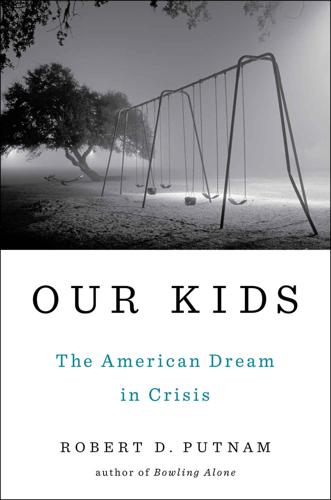
Our Kids: The American Dream in Crisis
by
Robert D. Putnam
Published 10 Mar 2015
Upper-tier kids are thus more likely than lower-tier kids to get financial assistance from their grandparents, even though they are less likely to need it. In short, taking grandparenting into account magnifies the growing youth class gaps. • • • I close with three cautions. First, in recent years we’ve heard much talk of excessive parenting under labels like “helicopter parents” and “overparenting.”74 No doubt one can find occasional illustrations of that phenomenon, which irritates both the kids and bystanders. It is misleading, however, to assume a false equivalency between excessive and inadequate parenting. There is no credible evidence that excessive parenting produces anything approaching the abundant ills associated with inadequate parenting.
…
Bill, 160–61 gifted-and-talented programs, 143, 153 Gilded Age, 41, 191 global warming, 228 Golden, Claudia, 34 Goodnight Moon time, 126–27, 242 government policies: on child development, 248–51 on family structure, 244–48 on parenting, 248–51 on schooling, 251–58 grandparents: financial assistance from, 6, 133 as replacement parents, 102, 132–34, 149–52 Great Depression, 34, 74, 191 Great Migration, 13 Great Recession, 22, 35, 130, 148, 223 grit, 4, 111, 176, 241 H hand-me-downs, 9–11 Hardy Boys, The (mystery series), 87 Hargittai, Eszter, 211–12 Harlem Children’s Zone (HCZ), 254 Head Start, 153, 249–50 helicopter parents, 133 high school: drop outs and, 26, 56 educational attainment and, 183–84 equivalency tests (GEDs), 93, 157, 183 graduation rates and, 137 see also Santa Ana High School; Troy High School High School movement, 160, 183, 260 Holzer, Harry, 231 Hooked on Phonics, 85, 118 housing: affordable, 251–52 crowded, 136 mixed-income, 251–52 school choice and, 164 vouchers for, 60, 247 Hout, Michael, 36 hug/spank ratio, 121 I immigrants: European, 192 Latino, 47, 84, 135 traditional marriage and, 72 unaccompanied children as, 261 upward mobility and, 141 imprisonment, parental, 76–77, 77 child poverty and, 26–27, 152 policy changes and, 247–48 incarceration policy, 76, 247–48 income: academic achievement and, 162, 165 distribution of, 22, 23, 31–32 Earned Income Tax Credit and, 247 equality, 31–34 mixed-income housing and, 251–52 social mobility and, 43–44 trends in, 35–36 income inequality, 37 in 21st century, 35, 43 low- vs. high-income schools and, 137, 138, 163, 166 Occupy movement and, 31 opportunity gap and, 227–28 poor old-timers vs. rich newcomers, 47, 251 residential segregation and, 38–39, 38 individualism, 206, 261 informal mentoring, 213 intensive parenting, 128 intergenerational mobility, 31, 82, 233 Internet: fund-raising and, 205 political uses of, 236 social networks and, 211–12, 269 Invisible Man (Ellison), 18 Isabella, 137, 139, 141–48, 160, 161, 165, 169, 182, 225 Ivy League schools: competitive pressure and, 139, 145, 147 educational attainment and, 139, 142, 198 graduation from, 148, 193 J James Joyce (Ellmann), 1 Jesse, 2, 12–16, 18–19, 30, 274 Jim Crow South, 13, 81 Job Corps training programs, 59 Joe, 54–56, 58–60, 64, 68, 73, 79, 118, 167 John, 203–204 “John Henry effect,” 113 Junior Women’s Club, 8 K Katz, Lawrence, 34, 160, 231 Kayla, 49, 54–61, 64–65, 67–68, 78, 115, 118, 125, 128, 185, 188, 216, 221, 234, 240, 256 Kefalas, Maria, 73–74 Kensington, 192–193, 198–205, 213, 216–221 Kenworthy, Lane, 246 King, Martin Luther, Jr., 241 Kirk, David, 170 Knott’s Berry Farm, 141, 162 Kornhauser, William, 239–40 L Laguna Beach, Calif., 136 Lake Erie, 3, 21 Land-Grant College movement, 160–61 language: as barrier to education, 155, 159 social class and, 29, 116 Lareau, Annette, 118 Latinos, 39, 47, 101, 267 affluent, 139–48, 158–60 in gangs, 140, 149, 152 in Orange County, Calif., 131, 135–37, 140–41, 144, 158–59, 175 poverty of, 148–58 traditional marriages and, 72, 84 see also specific individuals Lauren, 83, 92–100, 123, 185, 188, 216, 256 learning disabilities, 111, 163 Libby, 2, 9–12, 18–19, 30, 274 library cards, 97 licking and grooming, 115 life stories, research for, 263–77 see also specific accounts of individuals LinkedIn, 211 Lisa, 198–206, 216, 225, 234, 256, 257 logging industry, 46 Lola, 132, 137, 148–57, 161, 171–72, 175, 178, 182, 184, 188, 216, 234, 240, 256, 267, 269 Los Angeles, Calif., 135, 139 Lower Merion, 192–98, 205, 206, 217, 221 M McGuffey’s Reader, 33 McLanahan, Sara, 63, 65, 68, 69–70, 71 Madeline, 193–96 manners, 10, 151 March on Washington, 241 Marines, U.S., 157 Marnie, 193–98, 205, 209, 211, 229, 264, 269 marriage: class gap and, 40–41 cohabitation vs., 67–68 government policies and, 244 shotgun, 62 traditional, 7, 12, 62, 72 marriage trap, 56 Mary Sue, 221, 268 Massey, Douglas, 34, 44–45, 252 mass movements, 240 medical insurance, 201 mentors, mentoring: Big Brothers Big Sisters, 213 church leaders as, 4, 197 class gap and, 213–16, 215 formal vs. informal, 213 parents as, 98, 197 as solution to class gap, 259 sports coaches as, 14 teachers as, 141, 196 methods appendix: qualitative research, 263–74 quantitative research, 268–69 Michelle, 83, 92–100, 125, 128, 185, 188, 216, 234, 256, 267, 270 mining industry, 13, 16, 20 Mississippi, 13, 14 mobility: absolute vs. relative, 41–42 intergenerational, 31, 82–83 methods of assessing, 43–44 PCHS class of ’59 and, 4, 7 social, 31–34, 43–44 trends in, 228–29 see also upward mobility Molly, 198–206, 217, 218, 224, 233 Mommy and Me classes, 86 money: “old money” gentry and, 25 parental spending and, 125–26 politics and, 238–39 mothers: age at child’s birth and, 64, 65 employment of, 71, 71 marital status and, 66–68, 66 stay-at-home, 71 Mount Laurel, 251–52 Moving to Opportunity, 223 Moynihan, Daniel Patrick, 62 multi-partner fertility, 68–71, 78 Mullainathan, Sendhil, 130 Murnane, Richard, 250 My Brother’s Keeper, 213 “My City Was Gone” (song), 1 N natural growth, 118 neglect: educational, 155 parental, 26, 104, 111–12 Negro Family, The (Moynihan), 62 neighborhoods: affluence vs. poverty and, 217–23, 219 childhood obesity and, 222–23, 222 class segregation and, 38–39, 38 crime in, 102–3, 199–200 Moving to Opportunity and, 223 regeneration of, 259–60 safety and, 97, 140 social trust and, 219–21, 219 neighborhood development, 251, 259–60 Nelson, Timothy J., 68 New Deal, 34 New Hope Program, 260 New Orleans, La., 102–4 New York, N.Y., 81, 84, 254 1950s: affluence in, 5–6 class disparities in, 6–9 economic mobility during, 9–12 family structure and, 62–63 parental involvement in schools during, 156 Port Clinton during, 1–19, 29–30 race in and, 12–19 social norms of, 12 working class in, 3–4 Nixon, Richard, 135 noncognitive skills, 111, 176 O obesity, childhood, 222–23, 222 Occupy movement, 31 Okun, Arthur, 230–31, 234 opportunity, equality: as American Dream, 41–44 child development for, 248–58 class gap and, 31–34 Declaration of Independence and, 241 through democracy, 230, 234–41 diminishing the gap of, 260–61 through economic growth, 230–34 education and, 32, 44–45, 137, 161, 258 fairness in, 22, 241–42, 264 income distribution and, 31–32 mobility and, 31–34, 41–44 moral obligation to, 240–42 social mobility and, 41–44 statistical evidence and, 42–43 opportunity gap, 227–61 child development and, 248–51 community and, 258–60 community colleges and, 257–58 democracy and, 234–40 economic growth and, 230–34 family structure and, 244–48 income equality and, 227–28 moral obligation and, 240–42 opportunity costs and, 230 opportunity youth and, 232, 232 schools and, 251–58 solutions to, 242–44, 260–61 Orange County, Calif.: affluence in, 135, 139–143, 264–265, 270–71 demographic changes in, 135–36 Latinos in, 135–37, 139–43, 148–52, 158–59 life stories of, see Clara; Isabella; Lola; Ricardo; Sofia Santa Ana schools in, 137, 138, 153–57 Troy High School in, 137, 138, 143–48 working-class communities, 265 Orfield, Gary, 165 Origins of Totalitarianism (Arendt), 240 out-out-wedlock births, see nonmarital pregnancies Ozzie-and-Harriet families, 61, 63 P para-school funding, see fund-raising parental leave, 248 parenting, 80–134 age of mother and, 64, 65 child development and, 109–17 class gap and, 119–22, 120, 133–34 day care and, 128–30, 248–49 education of parents and, 119, 249 family dinners and, 24, 122–24, 124 government policies on, 248–51 grandparents and, 132–34 imprisonment and, 26–27, 76–77, 77, 152, 247–48 investments in children, 24, 29, 51, 86–88, 92, 123–24, 127, 143, 145, 159, 166–67, 195 nonmarital births and, 66–68, 66 permissive, 117 planned vs. unplanned births and, 64–65 school involvement and, 24, 86, 156, 167 solutions for problems in, 248–51 spending and, 125–26, 126 stress and, 130–32 time and, 26, 59, 88, 126–28, 127 verbal, 120 parenting trends, 117–34 parent-teacher association (PTA), 88, 167 parochial schools, 84, 254–55 Patty, 50–52, 92, 128, 229 pay-to-play policies, 180–81, 258 peer pressure, 160–73 People of Plenty (Potter), 33 Percheski, Christine, 69–70 permissive parenting, 117 Philadelphia, Pa.: community disparity in, 191–206 life stories of, see Amy; Eleanor; Lisa, Madeline; Marnie; Molly Philadelphia Story, The (film), 191 Philadelphia Youth Orchestra, 204 piano lessons, 86, 139, 178, 194 pluralism, 136 Police Athletic League (PAL), 199–200 politics: class gap and, 237–40 class savvy and, 11, 140 Politics of Mass Society, The (Kornhauser), 240 Port Clinton, Ohio, 1–45 in 1950s, 1–9, 29–30, 270; see also Port Clinton High School (PCHS) in 21st century, 2, 19–30, 270 affluence in, 5–6, 24–26 class gap and, 2, 6–9, 19–30, 270 factory closings in, 20 life stories of, see Cheryl; Chelsea; David; Don; Frank; Jesse; Libby opportunity gap in, 29 poverty in, 22, 23, 26–29 race in, 12–19 Port Clinton High School (PCHS), 3–6, 9–19 class of 1959, 3 Potter, David, 33 poverty: antipoverty programs and, 246–47 in Bend, Oreg., 47–48, 48 child development and, 116 costs of, 231–32 family instability and, 74 in Kensington, 198–206 in neighborhoods, 217–19, 219 in New Orleans, La., 102–3 in Port Clinton, Ohio, 22, 23 in Santa Ana, Calif., 136–38, 138, 170 schools and, 169–71, 171 pregnancy: marital, 203, 205 nonmarital, 61–62, 66–72, 66, 75, 78, 162, 204, 243, 245 teen, 2, 70, 196, 203–5, 245–46 trends in, 64–66, 73–75 premarital sex: family structure and, 62 teens and, 196, 203–5 Pretenders, The (band), 1 prison, see imprisonment, parental private schools, 52, 173, 194 Progressive Era, 244, 253, 256 property taxes, 165 prostitution, 152 public education system: Common School movement and, 160 equal opportunity and, 32 High School movement and, 160 Land-Grant College movement and, 160–61 see also class gap, education and public policy, 75–76 Q qualitative research, 263–74 constraints of, 272–84 life stories as, 263 model for, 265–66 participants and, 265–67 sample and, 270–71 Sandelson and, 265 Silva and, 270–71, 269–71 topics of, 267–68 quantitative research, 274–77 data sets and, 277 life stories as, 274 PCHS class of ’59 survey, 274–75 statistics of, 276–77 survey results, 276 R race: in 1950s, 12–19 in 21st century, 18, 91 affluence and, 84–92 class gap and, 76, 161–62 college scholarships and, 14, 17 in discrimination and segregation, 81–83 socializing and, 16–18 racism, 18–19 reading, 87, 143, 249 real estate: good schools and, 164 in Port Clinton, Ohio, 22 property taxes and, 165 white flight and, 81 Reardon, Sean, 161–62, 280 “rearview mirror” method, 44 relative mobility, 41–42 religion: child development and, 89–90 church attendance and, 224–25, 225 communities and, 197, 201–4, 223–26 see also churches research: field, 264 financial support and, 266 leadership of, 266 undergraduate, 265 see also qualitative research; quantitative research residential segregation: affordable housing and, 251–52 income and, 38–39, 38 schools and, 163–64, 251–52 residential sorting, 163 Ricardo, 137, 139, 141, 143, 146, 148, 165, 229 Riis, Jacob, 41 Rocky (film), 191–92 Rotary Club, 8 row houses, 192 Rust Belt, 30, 73, 264 S Sampson, Robert, 170, 217–18 San Diego, Calif., 135 Santa Ana, Calif.: as America’s most troubled city, 136 gangs in, 136, 170 poverty in, 136–37, 138, 170 Santa Ana High School, 59, 136–38, 148, 153–58, 163–64, 166–67, 169–70 characteristics of, 136 SATs (scholastic aptitude tests): as academic measure, 137, 142, 246 competitive pressure and, 139 preparation for, 144, 147, 197, 206 savvy gap, 213–16 Sawhill, Isabel, 79, 229, 245 Scarcity (Mullainathan and Shafir), 130 scholarships, 8 for black students, 14, 17 for Latino students, 141 school choice, 97, 164–65 school climate, 97, 153–54, 171–73 schools, schooling, 135–90 AP classes and, 39, 143, 168, 168, 173 Catholic, 84, 201, 254–55 class divergence and, 160 class gap and, 137, 138, 160–73 discipline problems in, 171 drugs and violence in, 153–54, 170 educational attainment and, 183–90, 189, 190 extracurricular activities and, 174–83, 177 finances of, 165–66 fund-raising and, 137, 147, 167 government policies and, 251–58 inequality in, 137, 138 Latino communities and, 158–60 opportunity gap and, 251–58 peer influence in, 11, 160-73, 197, 214, 236 poverty in, 169–70, 171 private schools and, 52, 173, 194 public education system and, 160–61 residential segregation and, 163–64, 251–52 solutions for problems in, 251–58 tracking and, 143, 173 see also education; specific schools Science Olympiad, 144 Schlozman, Kay, 236 Scott, Helen Hope Montgomery, 191 seat belts, sociological, 224 SeaWorld, 151 Section 8 housing assistance, 60 security, emotional, 53, 115 segregation, residential, 38–39, 38, 163–64, 251–52 “Self-Reliance” (Emerson), 261 serve-and-return interactions, 110, 123, 126 sexual norms, 73 Shafir, Eldar, 130 Shonkoff, Jack, 109–12 shotgun marriages, 62 Silva, Jennifer: field research and, 264 research methods appendix and, 263–74 Simone, 83, 84–92, 101, 110, 117–19, 122, 128, 143, 164, 166, 174, 206 single-parent families: changing family structure and, 69–71, 70, 92–101 in 1970s, 21, 62 nonmarital births and, 66–68, 66 parental imprisonment and, 76 social class: education and, 44–45 language and, 29, 116 parenting style and, 119–22, 120 see also class gap social isolation, 16–17, 28, 211 social mobility, 31–34, 43–44 social networks: affluence and, 209–10, 209 churches as, 4, 10, 89–90, 201, 206 class gap and, 207–10, 208 communities and, 207–13 Internet and, 211–12, 269 social safety net, and communities, 132, 206, 229, 246–47, 254, 258–59, 261, 264, 265 social trust, 95, 201, 219–20 socioeconomic status (SES), 189–90 Sofia, 132, 137, 148–58, 160–61, 165, 168, 171, 172, 175, 178, 182, 185, 188, 216, 234, 256, 269 soft skills, 174–76 spending, parental, 125–26, 126 Spock, Benjamin, 117 sports: class gap and, 178, 179 as equalizer, 4, 97 pay-to-play policies and, 180–81, 258 Title IX and, 175 Stephanie, 83, 92–101, 110–11, 114, 117, 120–21, 123, 128, 163, 167, 263, 267 step-parents, 63, 93 step-siblings, 57, 63 stress: competitive, 144–45 financial, 130–31, 131 parental, 130–32 toxic, 111–14 suburbs, 261, 265 summer learning gap, 86–87, 143, 162 Sun Belt, 80 Supporting Healthy Marriage program, 244 T teachers: Talent Transfer Initiative and, 253 teacher flight and, 253 teacher quality and, 137 teacher salaries and, 165–66 team sports, see sports technology, 143, 212, 257, 265 see also computers; Internet teen pregnancy, 203–5, 245–46 television, 3, 57, 89, 91, 93, 117, 119, 123, 128, 162 test scores: K-12 education and, 161–62 see also SATs Tiger Moms, 145, 159 time, child-parent relationships and, 126–28, 127 Tolstoy, Leo, 61 tough love, 88, 96, 100–101, 120, 195 toxic stress, 111–14 tracking, 143, 173 traditional families, 61–62 traditional marriage, 7, 12, 62, 72 trailer parks, 22, 57 travel, 53 Troy High School, 137, 142, 143–48, 163, 165 characteristics of, 138 competitive pressure at, 139, 144–45 curriculum of, 143–44, 213 extracurricular activities in, 145–47 fund-raising and, 147 Newsweek ranking of, 143 Tiger Moms and, 145 trust: building of, 270 social, 95, 201, 219–21 trust funds, 6 U unemployment, 20, 136 United Auto Workers (UAW), 8 upward mobility: gender and, 11 parental spending and, 125 PCHS class of ’59 and, 4, 7 race and, 18 2nd generation immigrants and, 141 trends in, 228–29 V values, 75, 240 Verba, Sidney, 236 verbal parenting, 120 veterans, 160–61 violence: in New Orleans, La., 102–3 in Santa Ana, Calif., 136 in schools, 153–54, 170 in South, 13 vocabulary gap, 92 vocational education, 255–56 volunteer work, 157, 259 voting, 235–37, 235 W Waldfogel, Jane, 122, 248 Waltham, Mass., 270, 272 War on Drugs, 76 Washbrook, Elizabeth, 122 weak ties, 198, 208–10, 208, 209 wealth gap, 31, 37 welfare system: costs of, 232 family structure and, 75 medical insurance and, 202 reforms of, 244 Wendy, 24–25, 29, 92, 143, 266 Weston, Mass., 270 white flight, 81 Y youth: church programs for, 202–4 Facebook and, 205, 269 recreation, 199 voting and, 235–37, 235 YouthBuild network, 256 Simon & Schuster 1230 Avenue of the Americas New York, NY 10020 www.SimonandSchuster.com Copyright © 2015 by Robert D.

Apollo's Arrow: The Profound and Enduring Impact of Coronavirus on the Way We Live
by
Nicholas A. Christakis
Published 27 Oct 2020
People also took more personal responsibility for their medical care and were obliged to make more careful judgments about whether to seek professional treatment, given the risks of going to a health-care facility.10 Children may have benefited the most from the increased independence. In contrast to the pre-pandemic helicopter-parenting culture that kept so many young people from acquiring autonomy, a lot of parents seemed to have waved the white flag after a few weeks of homeschooling, abandoning any pretense of adult control. Teenagers assumed vampire hours, forgoing family dinners and wolfing down a couple of frozen burritos late at night after a hard day’s shut-eye.
…
Lai et al., “Characteristics Associated with Out-of-Hospital Cardiac Arrests and Resuscitations during the Novel Coronavirus Disease 2019 Pandemic in New York City,” JAMA Cardiology, June 19, 2020. 11 N. Friedman, “Locked-Down Teens Stay Up All Night, Sleep All Day,” Wall Street Journal, May 22, 2020. 12 L. Skenazy, “COVID Surprise: Kids Are Doing All the Stuff Helicopter Parents Used to Do for Them,” Big Think, April 30, 2020. 13 N. Doyle-Burr, “Norwich Rallies Together to Grow Gardens as Part of COVID-19 Response,” Valley News (Lebanon, NH), May 18, 2020. 14 United Nations, Department of Economic and Social Affairs, Population Division, World Urbanization Prospects: The 2018 Revision (ST/ESA/SER.A/420), New York: United Nations, 2019. 15 Anonymous, “Men Pick Up (Some) of the Slack at Home: New National Survey on the Pandemic at Home,” Council on Contemporary Families, May 20, 2020. 16 Anonymous, “A Survey of Handwashing Behavior (Trended),” Harris Interactive, August 2010. 17 K.R.
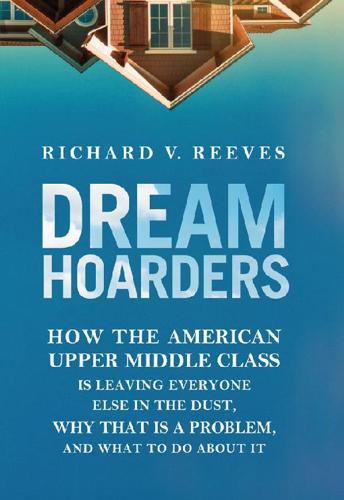
Dream Hoarders: How the American Upper Middle Class Is Leaving Everyone Else in the Dust, Why That Is a Problem, and What to Do About It
by
Richard V. Reeves
Published 22 May 2017
This Duty and Concern is one that us upper middle-class parents take very seriously. Having (usually) planned and timed our child-rearing years, we engage proactively with the process of raising and developing our children. We are the social class that first turned the noun into a verb. We are not just parents; we parent. It is easy to parody overzealous affluent “helicopter” parents shuttling our children from after-school tennis practice to cello lessons to a Chinese tutor. But the truth is that we are doing a lot of things right. High-income parents talk with their school-aged children for three hours more per week than low-income parents, according to research by Meredith Phillips of UCLA.12 This investment goes well beyond numeracy and literacy.
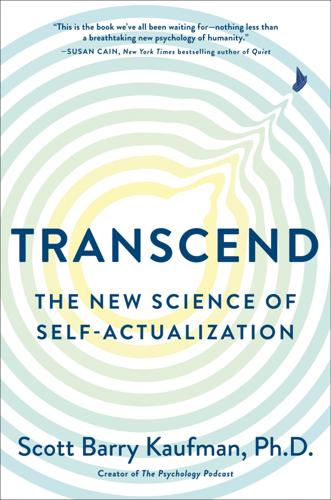
Transcend: The New Science of Self-Actualization
by
Scott Barry Kaufman
Published 6 Apr 2020
Young children test the waters and look to their parents or others in their environment to know whether it’s safe to explore. A child who feels too safe will become bored and seek to move on to “higher” exploratory delights. Too much safety holds kids back from real opportunities for learning and growth. As a response to “helicopter parenting”—overly protective and intrusive parenting—Lenore Skenazy founded the Free-Range Kids movement, in which parents are encouraged to raise children to function independently with reasonable acceptance of the risks. Along with Daniel Shuchman, Peter Gray, and Jonathan Haidt, Skenazy also founded the nonprofit Let Grow, whose mission is to counter the “culture of overprotection” with the aim of future-proofing our kids and our country.5 Exploration is not just for kids, and it is unfortunate that the spirit of exploration and play often wanes in adulthood.
…
“evil,” 240–41 gossip, 43, 96–97 “gradient of autonomy,” 165 grandiose narcissism, 64, 71–76, 77, 78, 80, 122 Grant, Adam, 33, 166 Graves, Clare, 226 greed, 4, 131, 244 Greenberg, Jeff, 59 Griffiths, Roland, 209 grit and equanimity, 89, 171, 172–75, 178, 183 Grogan, Jessica, 185 Gross National Happiness, 237 group cohesion, 39–40, 44 growth, xviii, xix, xx, xxi, xxiv, xxv, xxvi, xxvii, xxviii, xxx–xxxi, xxxii, xxxiii–xxxiv, xxxv, xxxix, 29, 69–71, 72, 81, 81–185, 238 growth challenges, 279–309 growth-driven life motivations, 79, 80 growth-mindedness, 135 growth purchases vs. material purchases, 49–50 Haidt, Jonathan, 92, 201, 204, 206 “hangry” (from “hungry” and “angry”), 12 happiness, xx, xxi, xxv, xxvi, xxxiv, xxxvii growth, 84, 93, 100, 131, 132, 146–47, 153–54, 155–56, 170 healthy transcendence, 197, 208, 213, 214, 219, 223, 229, 237 security, 11, 26, 41, 43, 48–50, 51, 70, 79 Harari, Yuval, 213 Harlow, Harry, 35, 36, 54, 55 harmonious passion, 145, 171, 175–76 Hatt, Beth, 32 Hayes, Steven, 70 “health-fostering” victory, 215 health insurance, Americans’, 7 “healthy childishness,” 225 healthy transcendence, xxxi, 187–244 See also transcendence Heaphy, Emily, 42 heart disease and loneliness, 45 Heavy Head, Martin, 4 “hedonic treadmill,” 49 hedonism, 100, 229–30 Heitzman, A. Lynn, 240, 241, 243 “helicopter parenting,” 92 Herman Miller, 158 Herzog, Werner, 154 hierarchy of needs, xiii, xiv, xvi, xvii, xxi, xxiii–xxxix, xxxv, 7, 44, 148, 163, 167, 175, 185, 191, 219 “higher needs,” xv, xxviii high-quality connections, 42–45, 52 hippocampus, 25, 26–27 Hirsh, Jacob, 10 Hitler, Adolf, 167, 168 Hoffman, Edward, 150, 194 holistic perceiving, 222 Honnold, Alex (“No Big Deal”), 97–98, 99, 101 hope, 28, 30–34, 126, 129, 171, 177–78, 179, 228, 229, 237 Hope Scale, 178 Horney, Karen, xviii, xxiv, 83, 136 horticulturists (teachers, therapists, parents), xxiii hubristic pride, 79 human existence.
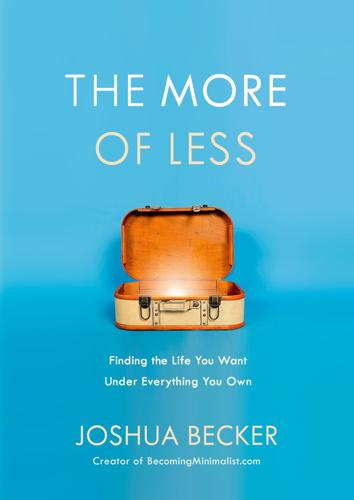
The More of Less: Finding the Life You Want Under Everything You Own
by
Joshua Becker
Published 2 May 2016
Due to our individualistic pursuits and distrust of institutions, our generation will average seven career changes during our lifetimes, something unimagined by our grandparents. But kids have a way of changing people. And Generation Xers, now in middle age, are parenting children of all ages. Most Gen Xers are responding to the parental examples they grew up with by embracing the opposite paradigm: “latchkey kids” have become “helicopter parents.” And with Baby Boomer grandparents who are used to showing love by buying gifts, Gen X homes are quickly becoming overrun with clutter. If you are a Gen Xer, your days of peak earning may be immediately in front of you. The “advantages” that consumerism is holding out to you may seem more within your reach than ever before.
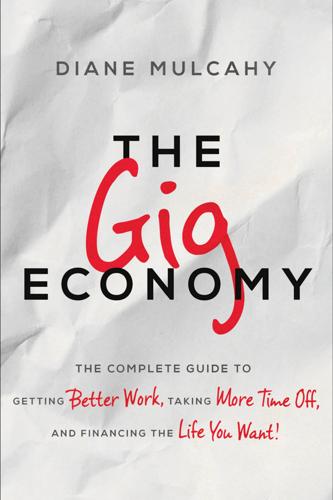
The Gig Economy: The Complete Guide to Getting Better Work, Taking More Time Off, and Financing the Life You Want
by
Diane Mulcahy
Published 8 Nov 2016
In the summer and other off-season times, he works about three and a half days a week. (During tax season, he puts in between sixty and seventy hours a week for about ten weeks.) His office is a mile away from his house, and Joe says he’s never missed a concert, Little League game, or school event. “We’re the helicopter parents,” he jokes—and he wouldn’t want it any other way. Tara Gentile’s story also starts with family. In 2008, she was working at Borders, earning $28,000 a year and working long hours. She had a six-month-old daughter at home, and was desperate to spend more time with her. She started looking into potential career alternatives, and settled on ramping up her online presence and starting a coaching business, focused on creative entrepreneurs.
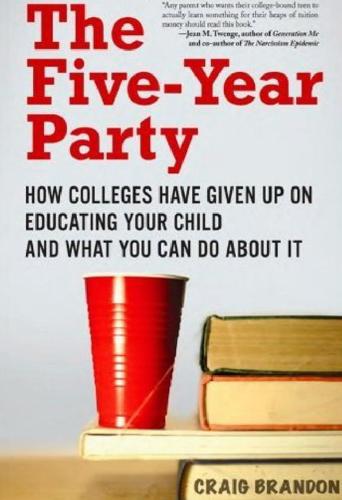
The Five-Year Party: How Colleges Have Given Up on Educating Your Child and What You Can Do About It
by
Craig Brandon
Published 17 Aug 2010
Although they use the privacy laws as an excuse, the real reason is that party school administrators think of parents as troublemakers who should simply pay the bills and stay out of the way. If parents were more involved in their children’s lives in college, it would create lots of problems for administrators, who often speak of them derogatorily as “helicopter parents,” reluctant to let their children go. Parents would likely question the wisdom of inflating grades, dumbing down classes, moving back the class drop date, and reducing the number of classes required for graduation. Parents would insist the college protect their children from the hazards of campus life, out-of-control binge drinking, and the lax enforcement of rape laws.
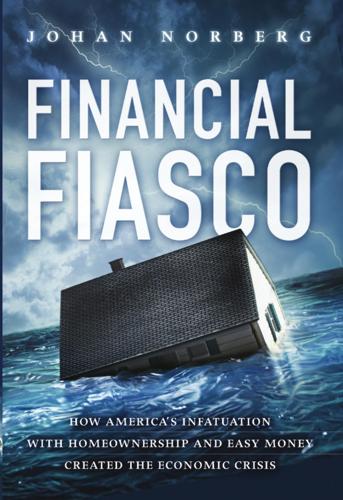
Financial Fiasco: How America's Infatuation With Homeownership and Easy Money Created the Economic Crisis
by
Johan Norberg
Published 14 Sep 2009
If there were such casinos, I am convinced that we would all be gambling much more, and much more wildly, than we do today. But that is how things are in our financial markets, especially now that government support and deposit insurance have become more extensive than ever before. The problem is that we do not have a casino economy. To borrow a metaphor from child rearing, we have a helicopter economy. Helicopter parents constantly hover over their kids, preventing them from falling and hurting themselves. This means that their children never grow up and learn to see dangers for themselves. And for this very reason, such children will eventually fall in more serious and dangerous contexts instead, because risk is part of the human condition.
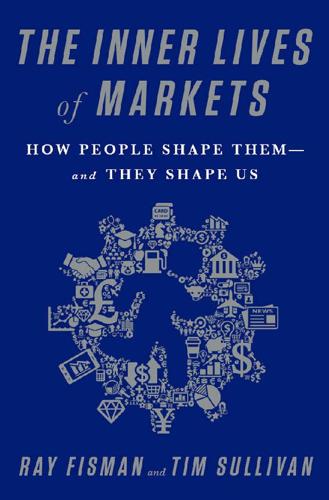
The Inner Lives of Markets: How People Shape Them—And They Shape Us
by
Tim Sullivan
Published 6 Jun 2016
The process of calling references and conducting in-person interviews to gather soft information about whether you really trust this person remains largely unchanged from when we were first hiring sitters a dozen years ago. Their imperfections notwithstanding, the advent of babysitter platforms is bad news for brick-and-mortar nanny placement services, whose businesses are surely suffering. But we’re still skeptical that any intermediary, however diligent, will overcome the anxieties of the modern helicopter parent. We doubt that day will ever arrive. Asymmetric information is dead? Long live asymmetric information. The Network Externalities of Ladies’ Night The calculation of how to set prices is a lot more complicated on platforms than in one-sided markets because they are defined by what economists call network externalities, where one person’s purchase makes the item more valuable for other would-be consumers.15 Obviously, this isn’t the case for groceries: the happiness I get from a box of Oreos isn’t affected by whether you prefer to spend your money on Oreos or chocolate-chip cookies or kale.

The Biology of Desire: Why Addiction Is Not a Disease
by
Marc Lewis Phd
Published 13 Jul 2015
Or, to put it more kindly, psychiatrists are becoming aware that addictive issues are defined by behavioural patterns, not particular substances. That’s a step in the right direction. People pursue certain activities repeatedly, often with little control, because those activities are highly attractive. That description can cover anything from spending sprees to helicopter parenting to jihadism, and so on and so on. But there is one very normal human endeavour that most of us recognize as the epitome of blind desire and recurrent pursuit: falling in love. Lovers think obsessively about their love object, exaggerate his or her positive qualities, and avoid thinking about future repercussions.

The Bend of the World: A Novel
by
Jacob Bacharach
Published 13 Apr 2014
These kids, he said—he often referred to these kids, as if he and I were the same age looking down on the twenty-somethings coming up after us, and in this particular case I was pretty sure that the Other Peter was actually a few years older than me—these kids have no respect. You know, they’ve all been told they’re special. Trophies for everything. Everyone gets a prize. And they just expect everything to be handed to them without having to work for it. Helicopter parents, I said, because the best way to converse with Ted was to pull a current, topical phrase out of the air and toss it into the air whenever he paused. Exactly, he said. My dad, boy. You didn’t get any of that from him. You have to pay your dues, I said. Of course, on the other side, there’s the gray ceiling.

Shadow Work: The Unpaid, Unseen Jobs That Fill Your Day
by
Craig Lambert
Published 30 Apr 2015
Constitution requires and choose to instill their preferred religious precepts at home.) Secondly, social norms have evolved to sanction, even encourage, increased parental involvement in children’s lives. To be sure, parental overinvolvement in schooling crops up mostly among the privileged. Upper-middle-class mothers and fathers were the first “helicopter parents” to hover ceaselessly over all their offspring’s activities. The even more aggressive “snowplow parents,” who are determined to plow a clear path before their kids, have now joined them. A new trend has parents of boarding-school students moving to towns near the prep schools to hover close to their offspring, who are living in dorms.

How Elites Ate the Social Justice Movement
by
Fredrik Deboer
Published 4 Sep 2023
Those with an internal locus of control tend to believe that their own choices and behaviors play a determinative role in their lives, while those with an external locus of control tend to assume that their lives are determined largely by outside forces. Contemporary liberals, like the bobos before them, act like they can determine the course of their own lives through smart choices and through the practice of personal discipline, their secular sacrament. The tension here is obvious. The selfsame helicopter parents who insist that their children delay gratification and make smart, forward-thinking choices evince political opinions that minimize the importance of those same decisions. After all, it’s liberals who fixate relentlessly on privilege, defined as unearned (and uncontrollable) advantage that accrues to some by dint of an identity category.
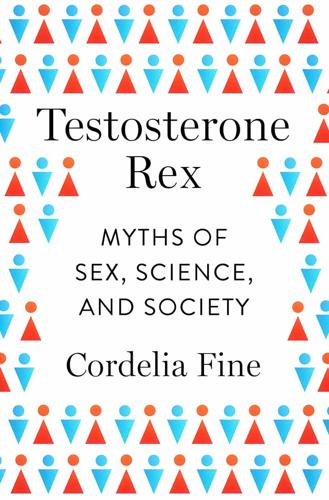
Testosterone Rex: Myths of Sex, Science, and Society
by
Cordelia Fine
Published 13 Jan 2017
So, too, for parental care: although greater maternal care seems to be universal across time and place, both mothers and fathers can be negligent and abusive, or loving and attentive, while cultural norms span from wet nurses to breast-feeding on demand, from boarding schools and thrashings to permissive, helicopter parenting. And as Wood and Eagly document, although it’s universal for human societies to have a division of labor by sex, how those roles are shared, and what they involve, vary markedly across time, place, and circumstance, depending on the demands of the “cultural, socioeconomic, and ecological environment.”67 These very open-ended outcomes would be more easily achieved by a developmental pathway that runs from sex to socialization to the brain (and hormones, as we’ll come to in a later chapter), rather than by an inflexible direct path from sex to brain.68 True, human societies’ allocation of sex roles isn’t always arbitrary: some roles are universally performed more commonly by one sex or the other.
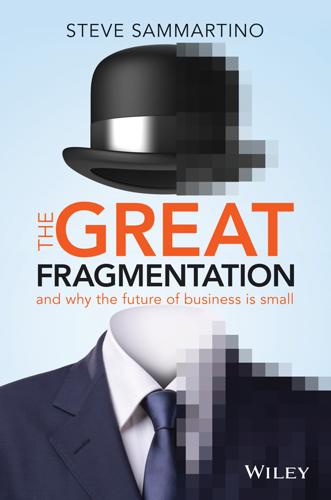
The Great Fragmentation: And Why the Future of All Business Is Small
by
Steve Sammartino
Published 25 Jun 2014
The fridge, cupboard and bathroom will also know what’s in them. Every piece of furniture, and every entry and exit point to the home will be connected. We’ll have live, HD-quality cam feeds in every room on demand. Every toy will augment our children’s playtime and provide peace of mind to helicopter parents. Every piece of sporting equipment will provide valued performance feedback to the weekend warrior (we already do this with our phones). The building materials in new houses and gardens, such as hoses and web-screen windows, will provide home hacking data. Municipality garbage bins will have detectors in them ensuring the web-enabled packaging of trash goes in the correct bin.
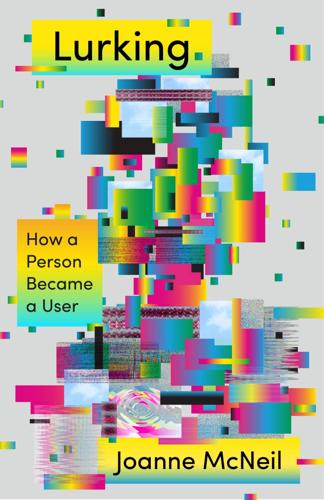
Lurking: How a Person Became a User
by
Joanne McNeil
Published 25 Feb 2020
Among the factors for this switch was the number of moral panic stories about child predators on Myspace. People who didn’t worry about their kids meeting older men in hotel rooms in the nineties—either because their kids weren’t old enough then, or they weren’t online—had new fears over Myspace riffraff. Facebook, associated with the university where every helicopter parent dreams of sending their kids, had none of that stigma. Myspace was transparently scuzzy and unabashedly vulgar, but that was preferable to covert slime. The industry-standard social media origin story is that a young white man wanted to look at women online and had a eureka moment about how to make money off the prototype.
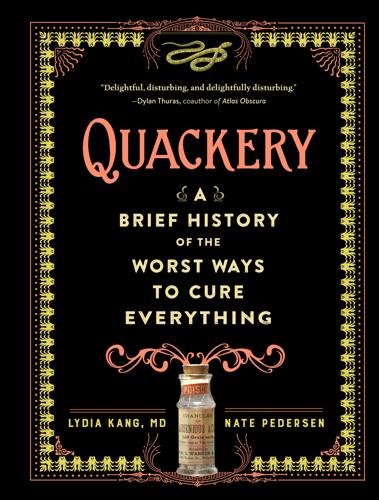
Quackery: A Brief History of the Worst Ways to Cure Everything
by
Lydia Kang
and
Nate Pedersen
Published 16 Oct 2017
It wasn’t until the mid-twentieth century that mercury compounds finally fell out of favor, thanks to a solid understanding that heavy metal toxicity was actually, you know, bad. Quicksilver: A Beastly Beauty Most people know of elemental mercury as that slippery, silvery liquid once used with ubiquity in glass thermometers. If you were a child before helicopter parenting or organic anything, you might have had the opportunity to play with the contents of a broken thermometer. The glimmering balls skittered everywhere and delighted children for hours. There was always something mystical about “quicksilver,” as it was often called. Its older Latin name, hydrargyrum, spoke to its astonishing uniqueness—“water silver”—and gave rise to its Hg abbreviation on the periodic table of elements.
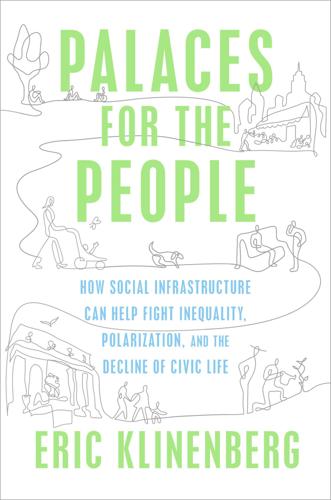
Palaces for the People: How Social Infrastructure Can Help Fight Inequality, Polarization, and the Decline of Civic Life
by
Eric Klinenberg
Published 10 Sep 2018
Consider, for instance, the social group that’s most often accused of shunning face-to-face interactions in favor of electronic communication: teenagers. According to research by danah boyd, director of the research institute Data & Society, young people spend so much of their social time online because adults—from helicopter parents to hypervigilant school administrators and security guards—give them few other options. Despite higher crime rates, teens in previous generations had more freedom to roam around their neighborhoods and local public spaces than today’s youths. They had more unstructured time after school and on weekends; they even had more free time during school, and far less surveillance.
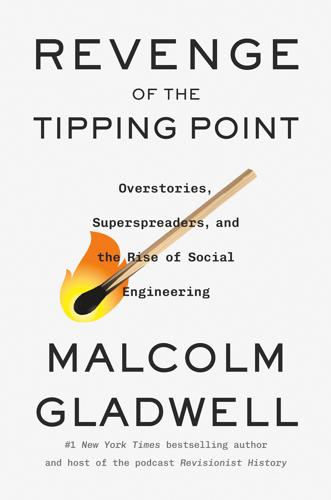
Revenge of the Tipping Point: Overstories, Superspreaders, and the Rise of Social Engineering
by
Malcolm Gladwell
Published 1 Oct 2024
Black went on: I mean, he was obsessed with that. And he would go on the road with them. And then he would find hotels that were near a synagogue so they could walk to the synagogue on Saturdays. Every little detail he would run in their lives because that’s what he was like. He was just like… Black paused for the right word: “A helicopter parent doesn’t even get near. This guy was an entire fucking Air Force.” Black, who has represented every manner of accused drug dealer, fraudster, money-launderer, and con man in the course of his long career, did not seem to enjoy his experience with Philip Esformes. “I mean, [Philip], he wanted to run the defense, which of course we didn’t let him do.
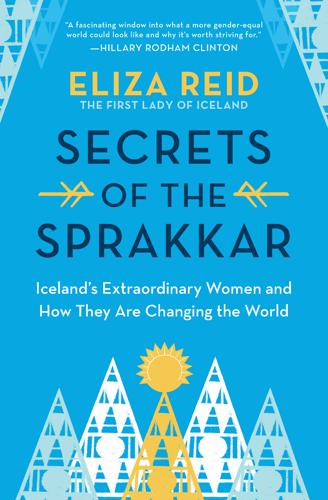
Secrets of the Sprakkar
by
Eliza Reid
Published 15 Jul 2021
Despite bringing a newborn along with me to meetings around the founding of the Iceland Writers Retreat—an unproven endeavor for which we were often seeking funding and needed to make a good first impression at meetings—I felt that having a baby, two children in preschool, and a first grader would not prevent me from having a successful professional career. There was no nanny or au pair at our wee yellow house, but there was an equally involved and caring partner, excellent, inexpensive child care, and a safe environment that encouraged independence in lieu of helicopter parenting. I wasn’t “doing it alone” because there was no expectation that I should. (I am sure no one even asked my husband, who was teaching and writing a book at the same time, whether he could handle it all.) I consider this freedom a remarkable statement of societal support, both formal and informal, that helps us all in the long run.

The Classical School
by
Callum Williams
Published 19 May 2020
As rose-tinted as his historical lens may be, he at least recognises that there are different ways of organising society. He believed that a different sort of state, one that moved towards liberal interventionism, was possible. As it turns out, he was right. 13 JOHN STUART MILL (1806–1873) Arch-capitalist or socialist? John Stuart Mill’s father was the world’s first helicopter parent. James Mill planned to produce the perfect human–rational, radical and reformist. From the day his son was born, James force-fed him knowledge. Holidays were practically banned, lest John acquire a taste for idleness. According to Richard Reeves, who wrote the best biography of Mill, John had composed a history of Rome by the age of six.

Laziness Does Not Exist
by
Devon Price
Published 5 Jan 2021
In the latter half of the twentieth century, the big parenting fad was attachment parenting, which suggested the exact opposite approach.12 Suddenly, the fear became that children who weren’t held and cuddled enough would develop low self-esteem, depression, and tons of other issues. By the 1990s, things flipped again and fear of “helicopter parenting” began to build, and parents started worrying that being too attentive could erode a child’s sense of self.13 “There is no way to not mess your kids up,” says Aiden, a stay-at-home father to three boys. Aiden is a transgender man, and says he’s worried about how to be the best father to his kids since the day he realized he was pregnant.

Daughter Detox: Recovering From an Unloving Mother and Reclaiming Your Life
by
Peg Streep
Published 14 May 2017
“My mother encouraged us to tattle on each other as a way of gaining favor with her because the more you pleased her, the better she treated you. My older sister dared to rebel against her and, boy, did she ever pay for it! I didn’t have the courage to but I wish I had. My sister left at 18 and never looked back. She is a personal success, and I’m still struggling.” It’s a pity that “helicopter” parenting has crept into the contemporary discussion because I think it sounds more benign than the word “controlling,” and it really isn’t. The controlling mother—no matter what you call her—actually believes that she’s doing the right thing by her child, and she usually has a host of rationalizations (aka “explanations,” from her point of view) to justify her behavior; in that way, she’s like the hypercritical or combative mother who also believes she’s disciplining or inspiring her wayward child.

SAM: One Robot, a Dozen Engineers, and the Race to Revolutionize the Way We Build
by
Jonathan Waldman
Published 7 Jan 2020
Among other things, he installed a cell-phone booster and a desk, so that he could work before a window while absorbing a full panorama of the line where water met sky. On the horizon to the northeast, he watched boats go by. Sometimes he brought his kids and set them free to run around the neighborhood as kids of so many previous generations—before helicopter parents and extracurriculars and iPads—had done. Such days registered deeply in him as amazing and dreamlike. The water exerted a calm over the engineer. Then the engineer came up with an idea. He wanted to build a dock—a special dock. He’d never built a dock, but that had never stopped him. With some help from a welder, he built a sixty-foot-long dock like no other.

The Meritocracy Trap: How America's Foundational Myth Feeds Inequality, Dismantles the Middle Class, and Devours the Elite
by
Daniel Markovits
Published 14 Sep 2019
The young rich today diligently study and doggedly train, with a constant eye on tests and admissions competitions, intent on acquiring and then demonstrating the human capital needed to sustain them as superordinate workers in adulthood. Their parents, moreover, organize much of adult life around the competition to preserve caste: they read, study, train, worry, and even marry and stay married alongside their children, and on account of ambitions for their children. Helicopter parenting is just superordinate labor applied to the project of reproducing status in a meritocratic regime. The strain of all this competitive effort builds over time, to produce measurable harms. In wealthy districts of Seoul, where students work harder than anyplace else in the world, the rates of curvature of the spine have more than doubled in the last decade, and doctors have named a new malady—“turtleneck syndrome”—in which a “child’s head hunches forward anxiously.”
…
See labor market polarization Goldin, Claudia, 347n(120), 363n(161), 372n(183), 376n188), 380n(209), 389nn(240, 242), 392nn(248), 393nn(251–52), 394n(252) Goldman Sachs and charisma of meritocracy, xi and classical liberalism, 214 and elite income explosion, 164 and fraud, 17 and human capital, 38 and luxury goods, 220 work intensity, 43, 190, 191 Great Compression, 47, 51, 102, 201, 218 Great Depression, xvii, 77, 79, 81, 274 Great Recession, 66, 102, 104, 181 See also financial crisis (2007–8) Griswold, A. Whitney, 112, 113 Groton, 111 GTE, 246 Gulf War (1990–91), 205 Harrington, Michael, 99–100, 101, 102, 103, 104, 107 Harvard Business School, 143–44, 184 Harvard Law School, 8 Harvard University, xi, 6, 25, 112 helicopter parenting, 154 Heller, Walter, 101 Hemingway, Ernest, 32, 47, 50, 51, 201 Henderson, Bruce, 245–46 Hewlet, Sylvia Ann, 315nn(10), 316n(12), 321n(32), 324n(44), 333nn(83), 338n(96), 339n(97), 368n(177), 376n(190), 377nn(191) hiring practices, 203–4 Ho, Karen, 313n(xi), 315nn(10), 316n(11), 320n(32), 332nn(82), 338nn(96–97), 339n(98), 362nn(157), 363n(164), 365nn(168), 377n(191), 378nn(192–93), 389n(239), 390n(343), 391n(246) Hochschild, Arlie Russell, 321n(32), 324n(44), 329n(63), 330nn(63, 68), 333nn(83), 377n(191), 379n(205), 381nn(215–16), 385n(227), 387n(282) home mortgage lending, 164–67, 236 homeschooling, 125 housing prices, 25, 46, 48, 56, 225–26, 234 Hoxby, Caroline M., 354n(133), 355n(133), 357n(138), 358nn(138–39), 360n(149), 372n(183) human capital, 35–41 and alienation, 37–38, 39–41, 193 vs. aristocratic wealth, 35–36 and competition, 37, 154 and elite childhood, 119–23, 131, 207 and elite education, 38–39, 115, 116, 154 and elite income explosion, 36 and elite work, 38, 39 and geographical concentration, 224 and innovation-based labor market polarization, 239–40, 248–50, 251–52, 254, 259 and marriage, 118 and midcentury management, 171 and military research, 237 mobility of, 49 resilience of, 150 and resource curse, 257 as self-exploitation, 40–41, 44, 78, 155, 262 and shared interest, 285 See also elite educational investment Hunter College High School, 151–54 IBM, 140–41, 174 Icahn, Carl, 173 identity politics, xvii, 57, 60–61, 62, 63, 64, 272 See also nativism inclusion.

Maphead: Charting the Wide, Weird World of Geography Wonks
by
Ken Jennings
Published 19 Sep 2011
Yet 82 percent of U.S. moms cite safety concerns as a reason to bar their kids from even leaving the house. Dear Abby recently urged parents to take a picture of their kids every morning before they head to school, so they’ll always have an up-to-the-minute photo in case of abduction. That’s not just helicopter parenting. That’s, like, Airwolf parenting. I’m part of the problem myself—this particular paragraph is getting written only because I plopped my young daughter down in front of the TV to watch Yo Gabba Gabba!, whereas thirty years ago my mom probably would have told me, “Go play outside.” But I worry about what my two children are missing, living in this unbrave new world where kids can’t spend a summer day out building forts and climbing trees.
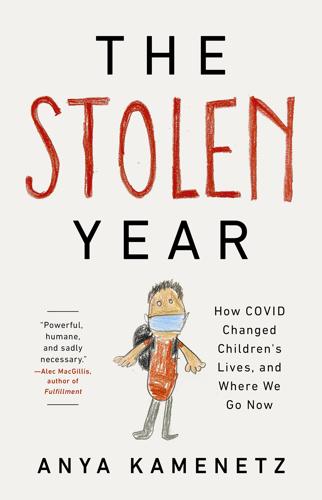
The Stolen Year
by
Anya Kamenetz
Published 23 Aug 2022
So they changed their job description from “housewife” to “stay-at-home mom,” putting the emphasis on the children. They basically went pro as moms. Scholars dubbed the approach “intensive mothering” (with an emphasis on the emotional investment) or “concerted cultivation” (emphasizing the time and money that goes to scheduling and enrichment). The media called it “helicopter parenting” (blaming moms for being neurotic). All of this is presented as what’s best for children. So women who work outside the house feel pressure to meet the new, impossible standard. That’s how you get this paradox where mothers are actually spending more time each week on childcare than women did in the 1960s, even while most are also working full-time.
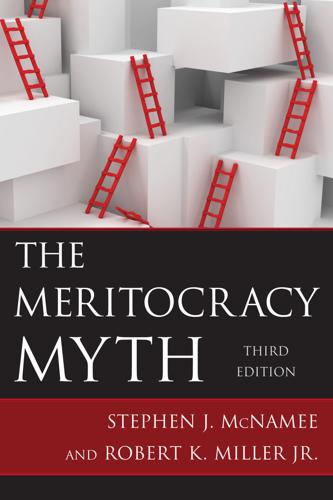
The Meritocracy Myth
by
Stephen J. McNamee
Published 17 Jul 2013
Privileged parents are also more likely themselves to have high educational attainment and to be familiar with “how the system works” and to “work the system” to maximize advantages for their own children, intervening on their behalf, sometimes aggressively, with teachers, principals, and other administrators (Lareau and Weininger 2003). Such aggressive privileged parents are commonly referred to by teachers and school administrators as “helicopter” parents. As birthrates have declined, especially among the privileged, there is some speculation that privileged parents are even more aggressive in investing in the futures of the fewer children they now have compared to prior generations. In the past, more children meant an increase in the odds that at least some would succeed even without aggressive parental intervention.

The Nanny State Made Me: A Story of Britain and How to Save It
by
Stuart Maconie
Published 5 Mar 2020
Damp northern winters filmed in black-and-white. Frozen cross-country quagmire slogs in the foggy November dusk. Being yelled at by grimacing PT teacher Alec Hurst, hands on hips in a black tracksuit at the top of Gathurst Hill. ‘School run’, in its (hardly more) pleasant modern associations of traffic jams, exhaust fumes, harassed ‘helicopter’ parents and impractical four-wheeled drive monstrosities in tiny suburban streets, is a term largely unheard until the 1990s. During my 70s schooldays, no one was driven to school except perhaps Jacob Rees-Mogg and the cast of Grange Hill at the height of their fame. Even as late as the 90s, 61 per cent of kids in Britain walked to school.
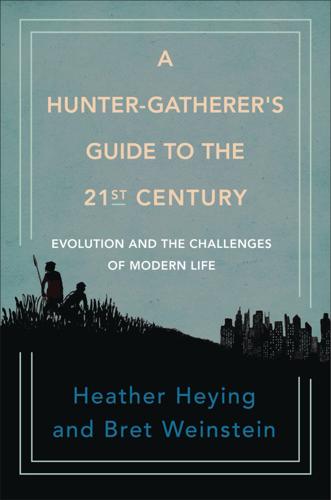
A Hunter-Gatherer's Guide to the 21st Century: Evolution and the Challenges of Modern Life
by
Heather Heying
and
Bret Weinstein
Published 14 Sep 2021
We interact with inanimate and animate objects differently, and learn not to ascribe intent to those that do not react. Letting inanimate objects babysit your young child risks sending the child the message that others in the world are neither responsive to nor deserving of respect and fairness. Legal Drugs and Children In combination with restricted access to risk and play (helicopter parenting), and using screens as babysitters, the diversity of legal drugs that are now regularly given to children helps create a perfect storm of societal factors that are damaging our children. The considerable rise in mood-altering and behavior-modifying pharmaceuticals being given to children in the last several decades38 is, we posit, in part a response to children resisting school culture, which we will explore further in the next chapter.

Leaving Orbit: Notes From the Last Days of American Spaceflight
by
Margaret Lazarus Dean
Published 18 May 2015
Will they hang on to the new numbers I have given them and a new idea that a government agency has achieved a lot with a little? We’re always being told unkind things about this generation of Millennials—that they are annoyingly attached to their devices and social networks, that their sense of entitlement leaves them without any work ethic, that their helicopter parents have made them helpless to care for themselves or others. This has not been my experience of them. Like young people of any generation, they think they are the first to experience everything. Like young people of any generation, they lack a sense of history. They are alarmingly vague about the events that seemed so earth-shattering to their elders, but so was my generation and so was my parents’.

Coming Apart: The State of White America, 1960-2010
by
Charles Murray
Published 1 Jan 2012
It is not urban legend, but documented fact, that some parents send their children to test-preparation schools for the entrance test to exclusive preschools.19 The lengths to which some parents will go to maximize their child’s chance to get into a prestigious college are apparently without limit. And the hovering behavior of these parents once the child has gone to college is so common that it has led to a phrase for them—“helicopter parents”—that is in common use among the administrators of America’s universities. Considerable social science research has also found that elite parents’ constant praise of their children can backfire, because it so often consists of telling children how smart they are, not of praising children for things they actually do.

Work Rules!: Insights From Inside Google That Will Transform How You Live and Lead
by
Laszlo Bock
Published 31 Mar 2015
The rest of the day is filled with product demonstrations, where parents can check out our self-driving cars or stand in a twenty-foot-tall room with Google Earth projected all around them, explore the campus, and then join a special TGIF hosted by Larry and our senior team. We now host these days in more than nineteen offices, including Beijing, Colombia, Haifa, Tokyo, London, and New York City, and add more each year. Take Your Parents to Work Day isn’t about humoring helicopter parents who continue to coddle their fully grown children. Instead, it’s a chance for us to say thank you and broaden the Google family. Not surprisingly, our parents are incredibly proud of us and, surprisingly, most of them have no idea what we do for a living. Helping them appreciate the impact their children have, even when those children are fifty years old, is heartwarming.
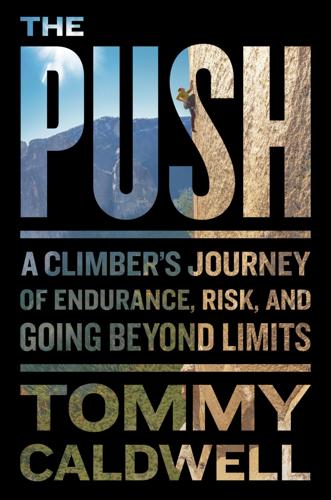
The Push: A Climber's Search for the Path
by
Tommy Caldwell
Published 15 May 2017
I didn’t know what to think, what to do. But God, how I love places like Patagonia. Climbing is about personal discovery, fulfilling your own wants. Child-rearing is about giving yourself to someone else. How much of being a good parent is the ability to recognize when you need to feed yourself? We all see examples of helicopter parents, families where the kids are the nucleus, and everything becomes about providing for them, even micromanaging them. Parents can lose themselves, lose each other. Most of the families I know have a line item in their budget for a psychiatrist. It’s so hard to get the balance right. Becca was skeptical, but she also saw my burning desire, how climbing nourishes me and provides me something to give.

The Contrarian: Peter Thiel and Silicon Valley's Pursuit of Power
by
Max Chafkin
Published 14 Sep 2021
The point—a common one made by apologists of the apartheid state at the time—seemed to be that South Africa was much more developed than its neighbors and that life there, even for those who were systematically denied their rights, was better than it was in, say, Ethiopia or Burundi. In the years that followed, Lythcott-Haims would attend Harvard Law School, practice law at the big corporate firm Cooley LLP, and serve as a dean at Stanford Law School, before becoming a bestselling author. (Her book How to Raise an Adult is a critique of so-called helicopter parenting.) Even so, she would write in 2016 that the exchange “stuck like a lump in my throat for 30 years.” Thiel’s spokesman responded that Thiel had “no recollection of a stranger demanding his views on apartheid” and that he had “never supported it.” Thiel eventually joined the College Republicans and discovered Ayn Rand.
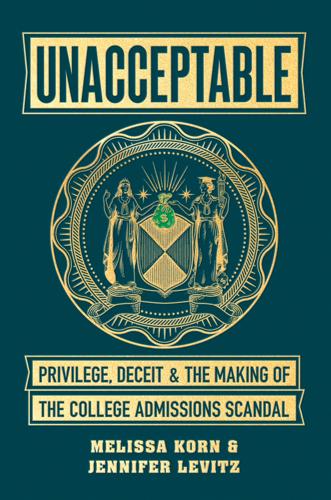
Unacceptable: Privilege, Deceit & the Making of the College Admissions Scandal
by
Melissa Korn
and
Jennifer Levitz
Published 20 Jul 2020
Another shift also defined the moment: Well-educated parents with disposable incomes could afford to worry about details like whether Jimmy had practiced piano enough. Obsessing over the little things can be a luxury, and these parents, often younger baby boomers, hovered over their children, teens, and young adults, intervening when things got even the slightest bit tough and earning the moniker “helicopter parents.” Wealthy parents have long tried to leverage influence over their children’s education, but now they were more proactive than ever and began to increasingly try to “fix it.” They complained about teachers who graded too hard and would show up at schools to take petty complaints to high-ranking administrators.

Nothing Personal: My Secret Life in the Dating App Inferno
by
Nancy Jo Sales
Published 17 May 2021
But the real question was why I was continuing to date guys from dating apps when I knew the whole enterprise to be fakakta, as my Russian grandfather would have called it. I had spent the last few months doing the aforementioned story—which I’d just emailed in to my editor; I’d been writing up there in Vermont as well as helicopter parenting—and what I had been hearing from the scores of young people and experts I had interviewed had only reinforced my sense that there were a lot of things about this new type of meeting and mating that were sort of sick, if not dangerous. There was the commodification these apps were inspiring.

Lifespan: Why We Age—and Why We Don't Have To
by
David A. Sinclair
and
Matthew D. Laplante
Published 9 Sep 2019
12 Or aging, which has a 90 percent chance of killing them? HIV immunity was just the simplest edit, not the most impactful. As these technologies become commonplace and parents ponder how to get the biggest bang for the buck, how long will it be before another rogue scientist teams up with the world’s most driven helicopter parent to create a genetically modified family with the capacity to resist the effects of aging? It may not be long at all. SEVEN * * * THE AGE OF INNOVATION THE FOUR PRESCRIPTION MEDICINES KUHN Lawan was taking were precisely right for the cancer with which she had been diagnosed.
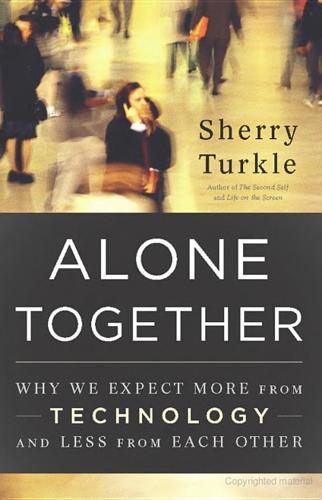
Alone Together
by
Sherry Turkle
Published 11 Jan 2011
As she and I speak, Julia’s thoughts turn to Columbine and Virginia Tech: “I’m reading a book right now about a school.... It’s about two kids who brought a gun to a dance and keep everyone hostage, and then killed themselves. And it’s a lot like Columbine.... We had an assembly about Columbine just recently.... At a time like that, I’d need my cell phone.” We read much about “helicopter parents.”5 They hail from a generation that does not want to repeat the mistakes of its parents (permitting too much independence too soon) and so hover over their children’s lives. But today our children hover as well. They avoid disconnection at all cost. Some, like Julia, have divorced parents. Some have families broken twice or three times.
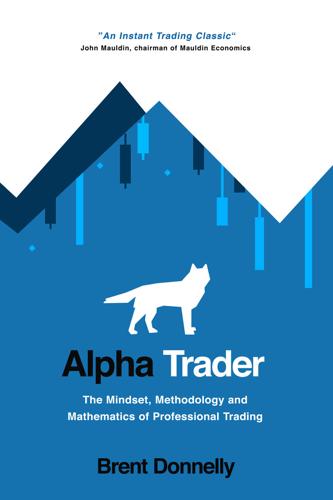
Alpha Trader
by
Brent Donnelly
Published 11 May 2021
Even when you fall down. Even when you screw up. Even when progress toward that goal is halting or slow. Alpha traders have grit. Duckworth’s book: Grit: The Power of Passion and Perseverance is on every high-performing parent’s bookshelf. Building grit in our kids is a strategy to combat the worry that helicopter parents have sheltered kids too much in recent years. The idea is that showering kids with praise and participation trophies instead of preparing them for the harsh realities of the cruel, cruel world makes them weaker, not stronger. While my feeling is that grit has been overplayed and somewhat beaten to death as a trendy simple fix in educational circles, that does not mean it is not a valid and important topic.
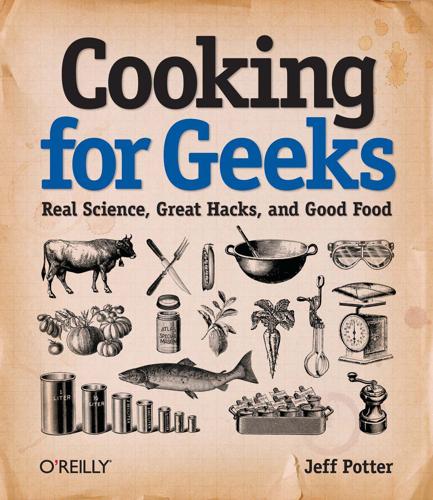
Cooking for Geeks
by
Jeff Potter
Published 2 Aug 2010
Setbacks. Negative feedback. No wonder there’s so much fear of failure: we’ve set ourselves a bar so high that it simply doesn’t exist. There’s a generation of Americans hung up on being perfect. The perfect white teeth, the perfect clothing, the perfect "carefree" tossed-together wardrobe. Helicopter parents. Overly critical Yelp.com reviews that rag on everything, down to who cuts our hair and the food we eat. Insane expectations in reviews on Amazon.com about the books we read. (A good book is one that gives you more value than the cost of the book and your time. Be kind. ;-) ) No wonder why some parts of American society seem to match the DSM-V criteria for schizophrenia: we’re literally going insane trying to be perfect when it just isn’t possible.
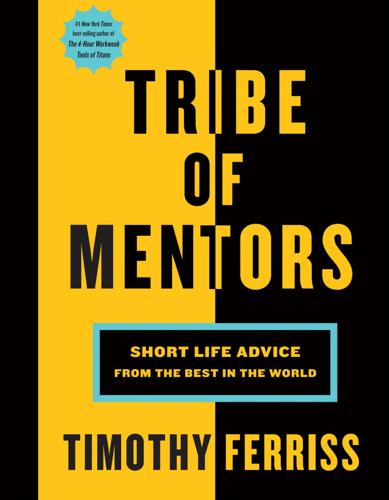
Tribe of Mentors: Short Life Advice From the Best in the World
by
Timothy Ferriss
Published 14 Jun 2017
Sure, coding will continue to be important, but creativity and collaboration will be as well. Don’t try to be something you’re not. Be confident in the skills you have, as they may be make-or-break for the journey you pursue. And third, be fearless. I recognize this is easy to say and hard to do, particularly for a generation that has been raised by hovering helicopter parents who may have encouraged you to stay in the box, and in a world that has been unsettled by job loss and terrorism. But despite all of that, you have to get out of your comfort zone and swing for the fences, knowing that sometimes you will fail. Remember, Babe Ruth was not only the home run king, he was also the strikeout king.

The Dream Machine: The Untold History of the Notorious V-22 Osprey
by
Richard Whittle
Published 26 Apr 2010
As chairman of the Senate Armed Services Committee during his last term in Congress, Tower had helped get the Osprey program started. Since leaving the Senate, Tower had been a U.S. arms control negotiator and run a commission for President Reagan that investigated the Iran-Contra affair. Since May 1988, he had been a $10,000-a-month consultant to Bell Helicopter parent Textron on the Osprey program. The new Bush administration was going to have to cut defense spending to live up to the president-elect’s famous campaign pledge of “no new taxes,” that was clear. With Tower atop the Pentagon, however, the Osprey figured to be safe. After Tower gave his speech that evening in Fort Worth, he wanted a drink, so Horner, Spivey, and the others from Bell joined him for cocktails in the lobby of the Hyatt Regency, formerly the Hotel Texas, where President John F.

Enlightenment Now: The Case for Reason, Science, Humanism, and Progress
by
Steven Pinker
Published 13 Feb 2018
The dire warnings about plagues of loneliness, suicide, depression, and anxiety don’t survive fact-checking. And though every generation has worried that the next one is in trouble, as younger generations go the Millennials seem to be in pretty good shape, happier and mentally healthier than their helicoptering parents. Still, when it comes to happiness, many people are underachievers. Americans are laggards among their first-world peers, and their happiness has stagnated in the era sometimes called the American Century. The Baby Boomers, despite growing up in peace and prosperity, have proved to be a troubled generation, to the mystification of their parents, who lived through the Great Depression, World War II, and (for many of my peers) the Holocaust.